Table of Contents
Without question, The Sunshine State is most famous for its beautiful beaches, golf resorts, and epic theme parks…But there is another side to Florida that’s worth exploring: It offers fascinating nature experiences! Throughout the state, there are numerous natural areas that are sanctuaries for interesting and rare wildlife. This includes three national parks – Biscayne, Dry Tortugas, and The Everglades – located on and off the southern end of the state. In this post, we’ll take a look at some of the most interesting things to do in Everglades National Park – Florida’s largest national park and a designated UNESCO World Heritage Site.
Where is Everglades National Park
Finding your way to The Everglades shouldn’t be difficult. The park is located south and west of Miami and occupies most of Florida’s southern tip. There are two main roads that lead to the park, State Highway 9336 and US 41, also known as Tamiami Trail. Each road takes you to different areas in the park, and the distances between them are significant. Therefore, it’s a good idea to plan ahead and know where you want to go.
Click on any of the markers and icons on the map to see what they represent. BLUE markers show various points of interest; GREEN hiker icons show hikes; RED camera icons show scenic overlooks; ORANGE bed icons show the best areas to book accommodations; PURPLE tent icons show drive-in campgrounds. All are discussed in this post.
Park Areas
There are three main areas to Everglades National Park: Gulf Coast to the northwest, Shark Valley to the northeast, and Flamingo to the southwest. Follow US 41 (Tamiami Trail) to get to Shark Valley and the Gulf Coast area; use State Hwy 9336 to get to the Flamingo area. Keep in mind, however, that it’s unlikely you’ll be able to explore everything in one day. Most visitors spend their time in Shark Valley and/or the Flamingo area, especially if they have only one day.
When to Go
When planning a trip to Everglades National Park, it’s important to consider the time of year. The best months to visit are between November and April, when it’s cooler and drier. The summer, on the other hand, can be quite oppressive. Not only do the temperatures rise, but also the humidity increases, creating the perfect breeding ground for mosquitoes.
Where to Stay

Deciding where to stay is another important thing when planning a US National Park trip. In The Everglades, most tourists come from the Miami metropolitan area. This is a good option, as there are a ton of accommodations to choose from. However, driving from and back to the heart of the city can take a long time. To cut your drive between the park and your hotel, consider booking a place in Kendall or South Miami. They are roughly about halfway between Shark Valley and the Flamingo Area of the park. You could also stay in Homestead, which is very close to the entrance of the Flamingo Area, but further away from Shark Valley.
If you are planning on spending a night or two on the west side of The Everglades, consider Marco Island. This way, you can combine exploring the park with relaxing near some of Florida’s lovely beaches.
Find a Place: Follow the links below to find the highest-rated accommodations in each area on Booking.com. We have filtered out the lower-rated ones for you! Booking.com is our favorite website for finding great places to stay all over the world.
Kendall || South Miami || Homestead || Marco Island
Camping
There are also camping options within The Everglades including two drive-in campgrounds and a number of wilderness camping sites. The two drive-in campgrounds are Long Pine Key and Flamingo Campground, and they accommodate RV’s and tents. Both are located in the Flamingo area of the park. For more information on camping inside The Everglades, click HERE.
How Many Days to Plan
To cover Everglades National Park really well, you will probably need a couple of days. This will give you enough time to explore all the areas and enjoy a boat ride or two. Don’t stress out, however, if you don’t have this much time! You can see plenty in one full day. If you start out early, you should be able to visit the Flamingo Area and Shark Valley and get an excellent overview of The Everglades.
Where to Begin
Before you get to the park, be sure to check the official Everglades Website to see if there are any important alerts and area closures. When we visited, Shark Valley was closed due to flooding, so we planned to spend our day in the Flamingo area. It ended up working out great for us! The Flaming area was the perfect introduction to the park, as it offered a nice variety of experiences. This is why I would suggest that you, too, start your Everglades explorations there.
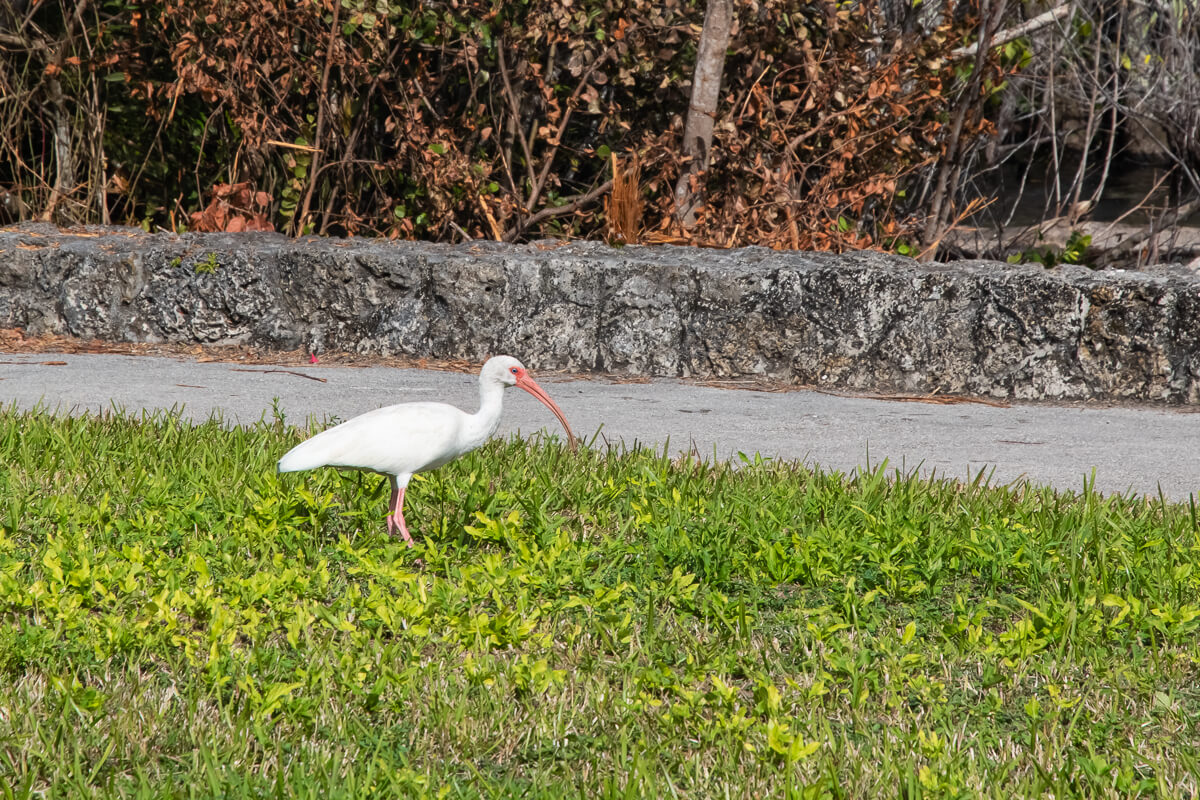
Explore the Flamingo Area
Enter the park at Earnest F. Coe Visitor Center and make a quick stop to get maps, stamps, watch a film, and chat with the rangers. Once you are all set, drive to the end of the main road until you arrive at the Flamingo Visitor Center.
Take a Back Country Boat Tour
Begin your Everglades adventure with a 90-minute back country boat tour departing from the Flamingo Visitor Center. This is a great way to learn about the environment and wildlife in the park. You can buy tickets there, but it’s best to make your reservations in advance at the Flamingo Adventures Website to be sure you get the spot you want. Flamingo Adventures also offer boat, kayak/canoe, and bike rentals, if this is something you would like to try. For more information about their rentals, click HERE.
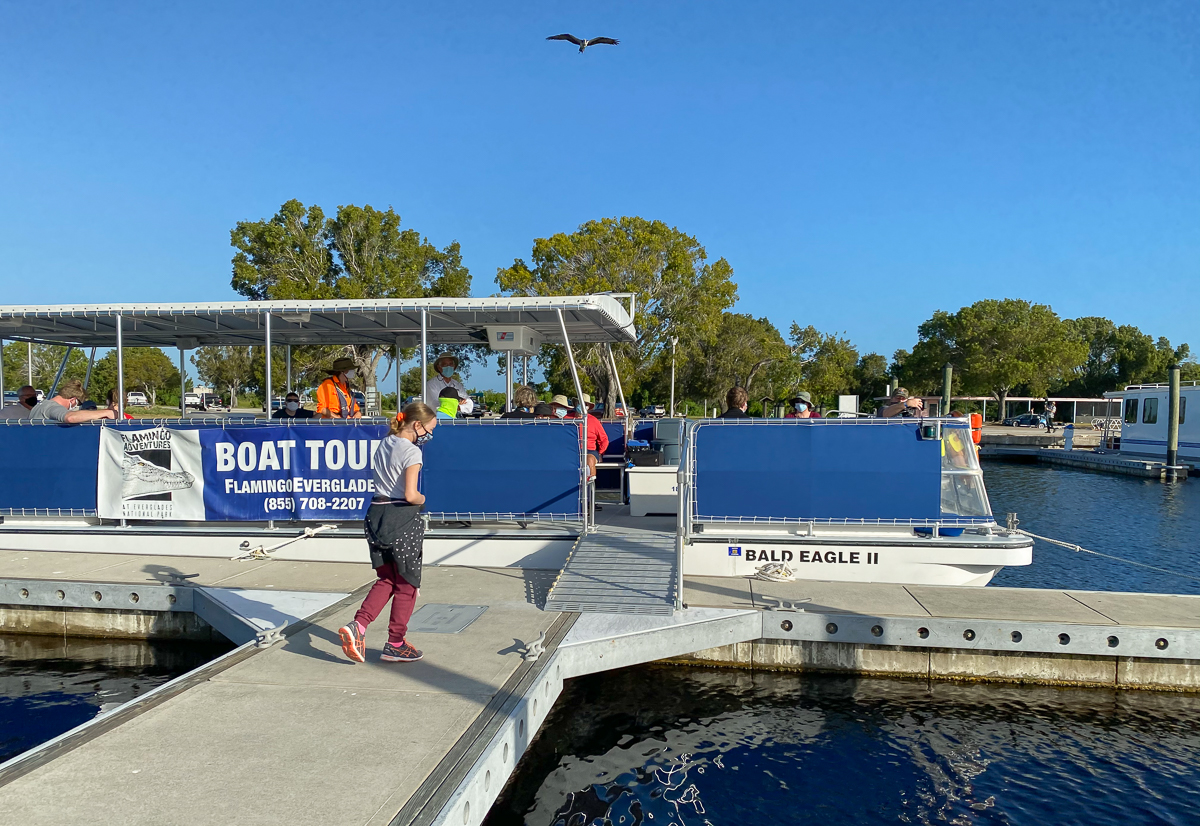
The back country boat tour will take you through channels lined with lush mangroves, where crocodiles, alligators, birds, and even manatees roam freely. You will also spend some time in the vast Whitewater Bay, or as our tour guide called it, “the epicenter of The Everglades.”
Alligators Vs. Crocodiles
If you are unclear about the differences between alligators and crocodiles, here are a few basics we learned:
- Alligators are generally a darker green or brown color than crocodiles.
- Alligators have a U-shaped snout, while crocodiles have more of a triangular, V-shaped snout.
- When their mouths are closed, alligators show only their upper teeth, while crocodiles show both upper and some lower teeth.
- In the US, alligators live in several Southern states, while American crocodiles are only found in Florida.
Mangroves
While on the boat tour, we also learned quite a bit about mangroves, specifically red and black mangroves. These are the trees and shrubs that grow all around the Everglades’ marshlands. You will recognize them by the tangled roots that extend above the water. These roots make the mangroves a lot more stable as water levels and conditions constantly change. Speaking of water, we noticed it was an unusual reddish-brown color. Our tour guide explained that the red mangroves are responsible for that. Apparently, a reddish substance called tannin leaches from their barks and dyes the water.

Hardwood Hammocks
If you’ve never been to Florida before, we should clarify one more thing. When visiting parks and natural areas, you will see signs and hear park rangers use the word “hammock” a lot. Let me tell you right away, they aren’t talking about a comfy sling hanging from a pair of palm trees! The “hammocks” in Florida are the thick tropical forests that grow slightly higher than the water level, creating a dry and shady environment. While in The Everglades, you will get a chance to walk through the hammocks, which can be a wonderful thing on a hot sunny day.
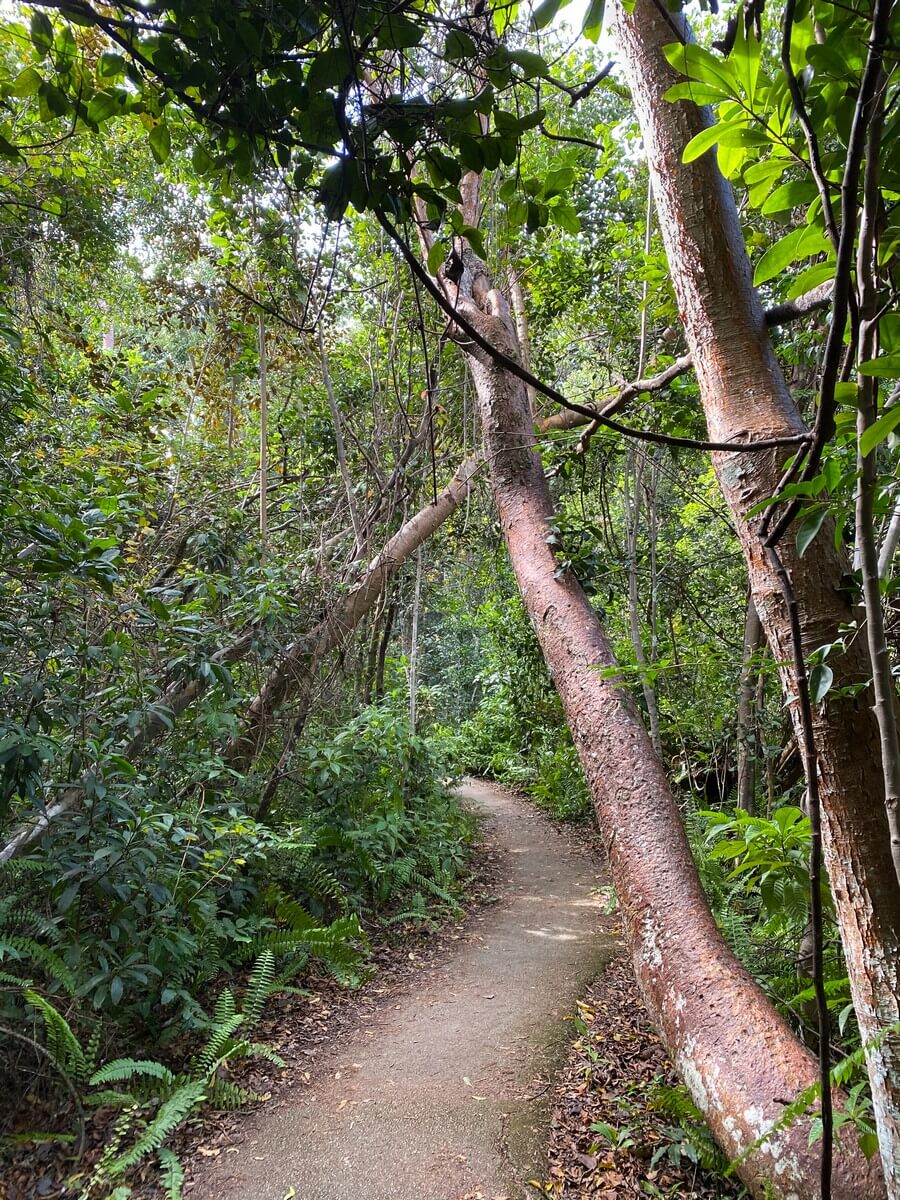
To recap our boat ride, we all agree it was not only enjoyable, but also very educational. We absolutely loved cruising around with Flamingo Adventures and can’t recommend them enough! Here are some pictures from this fantastic experience.

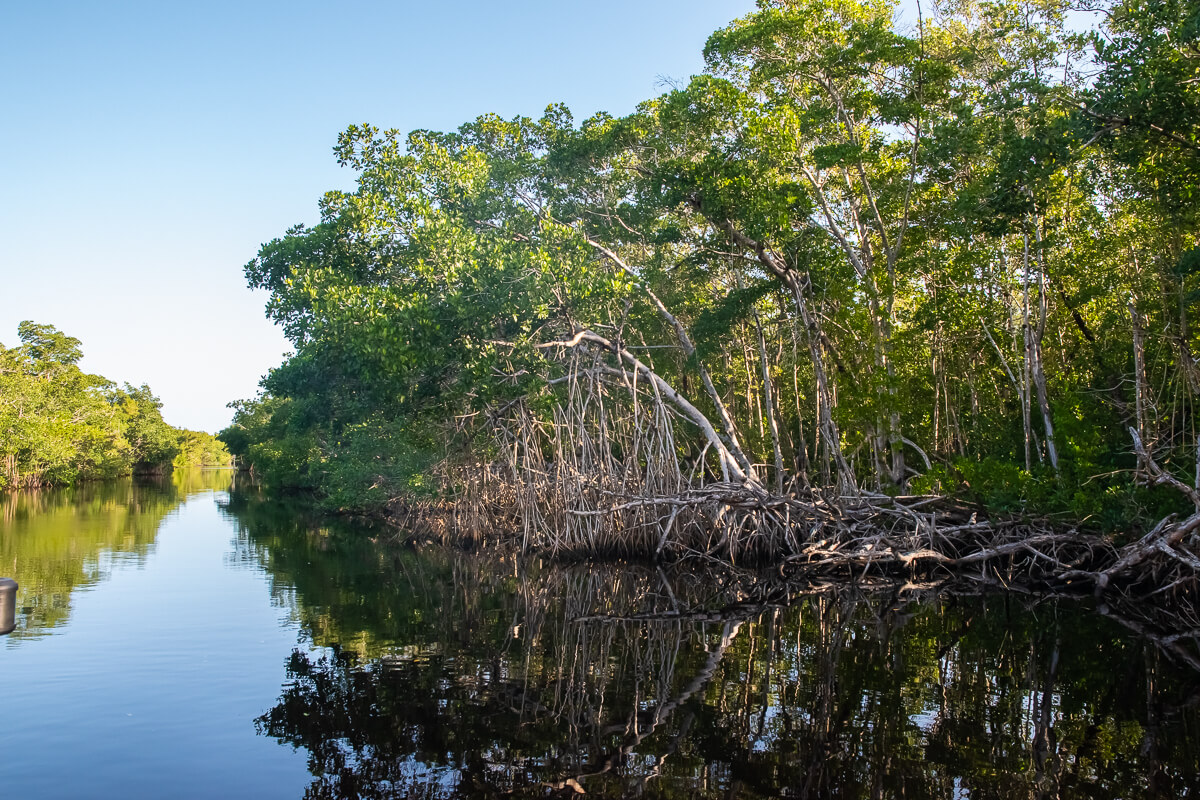
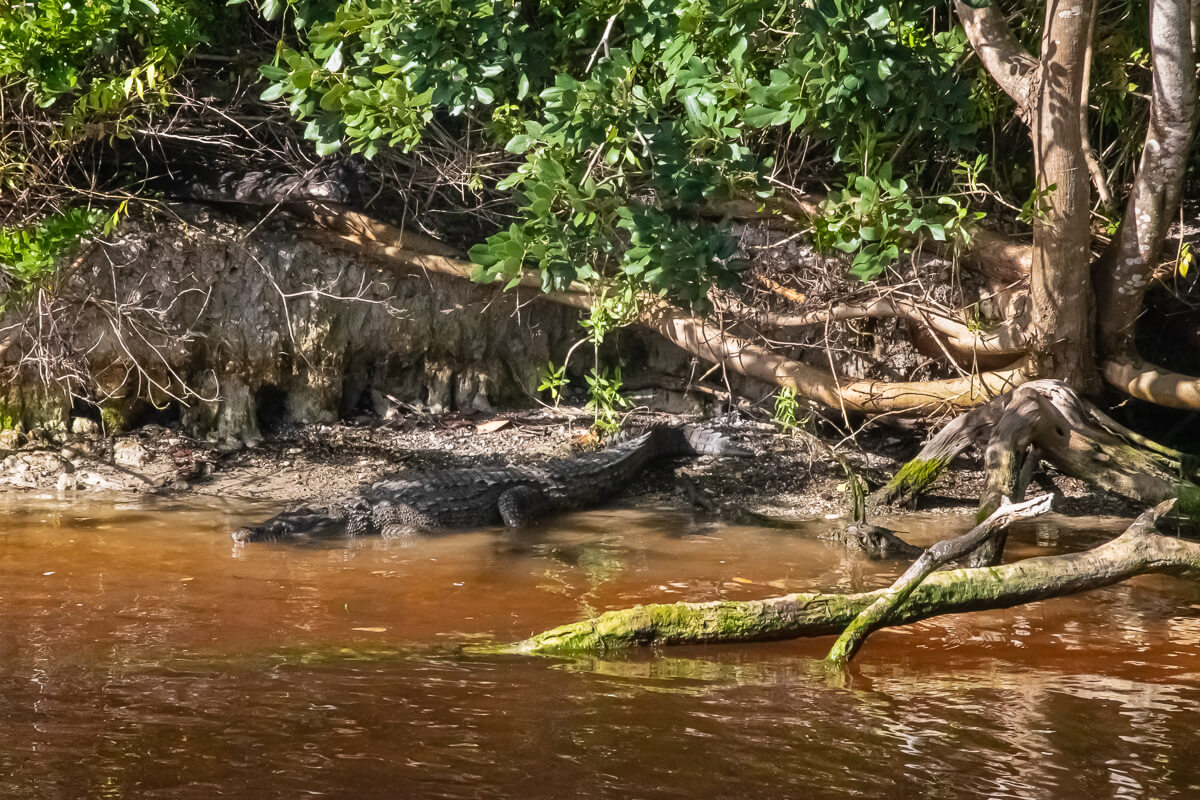
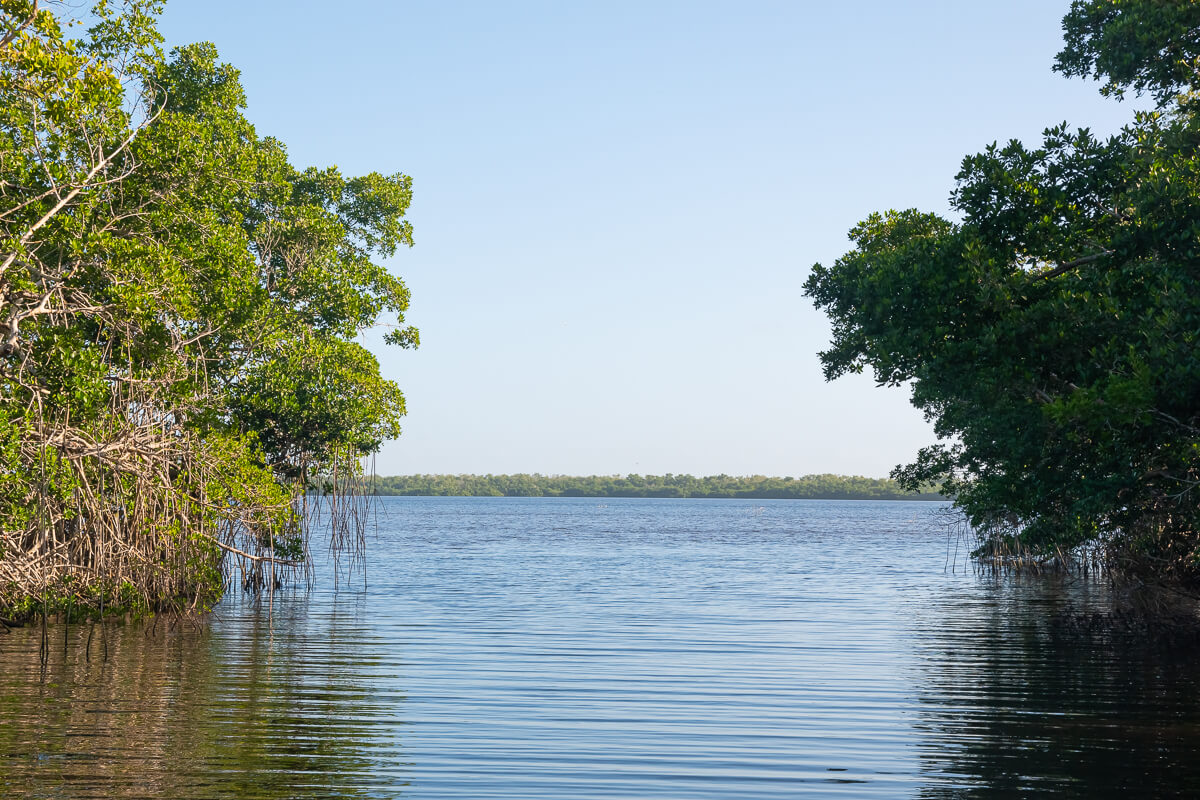
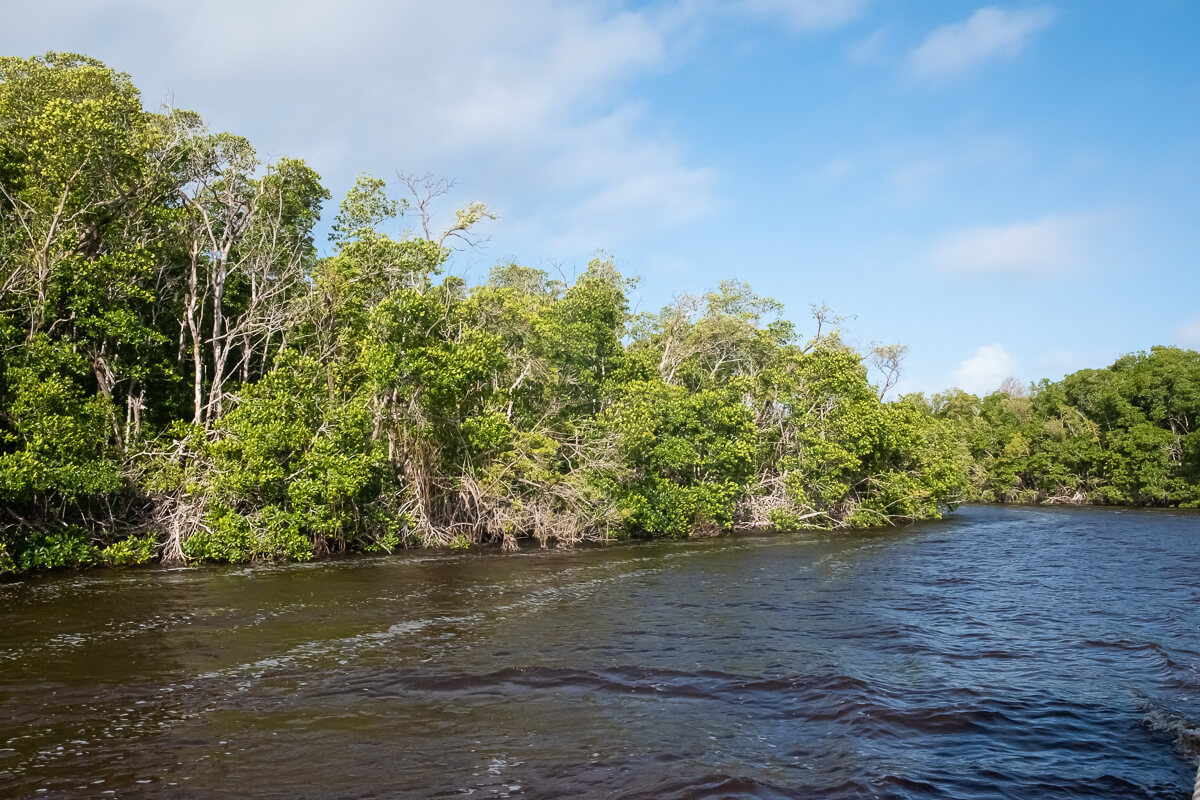
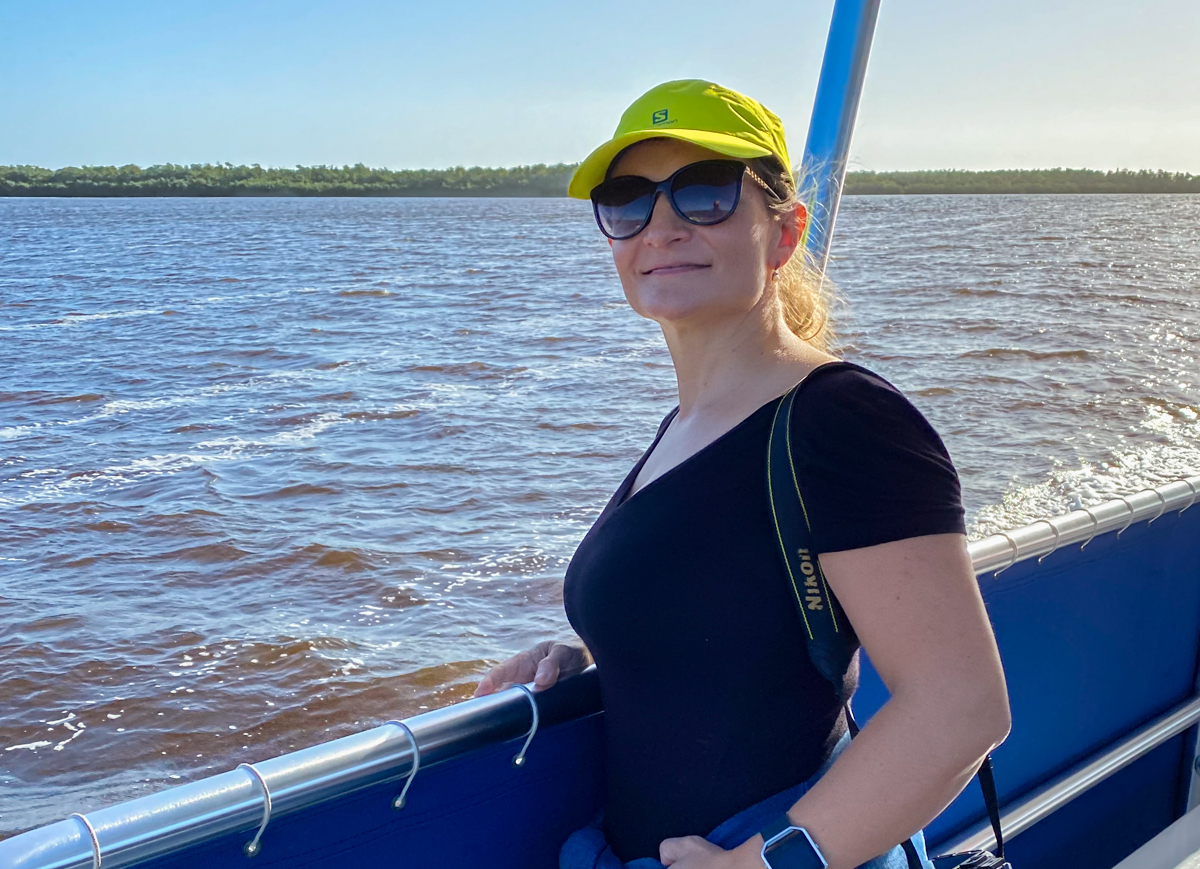
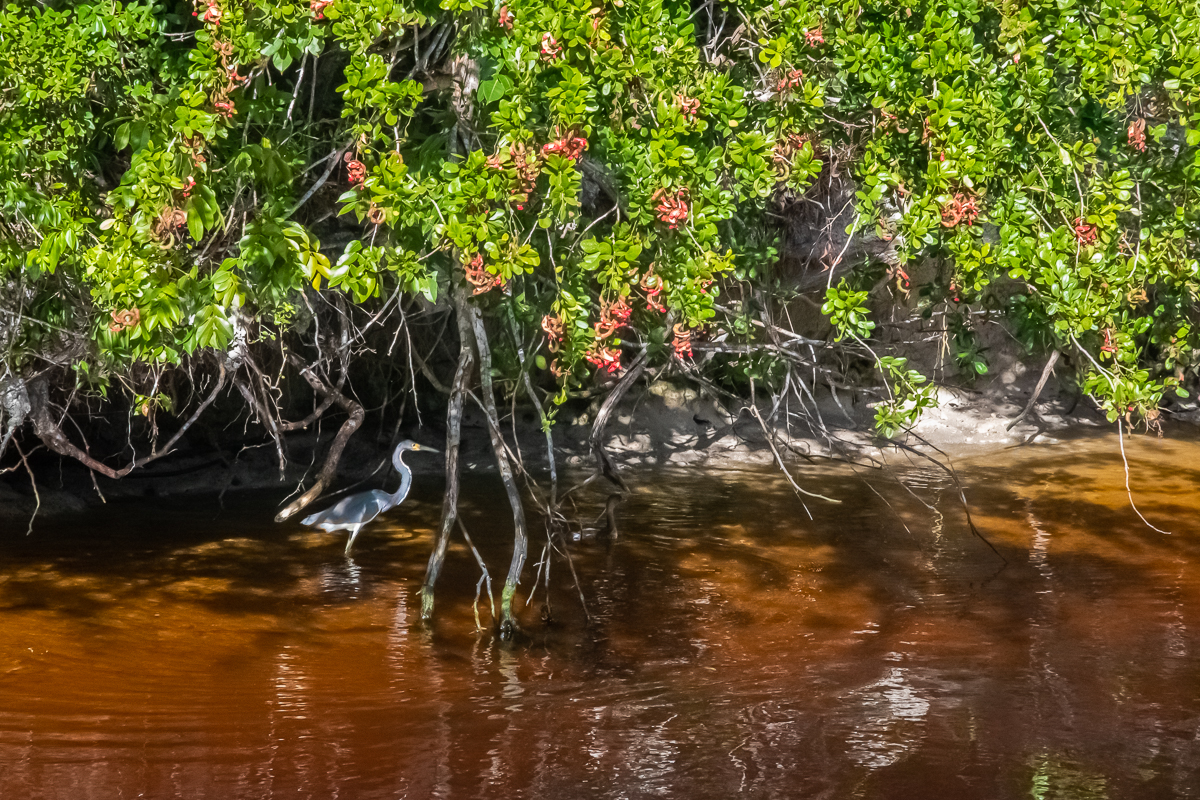
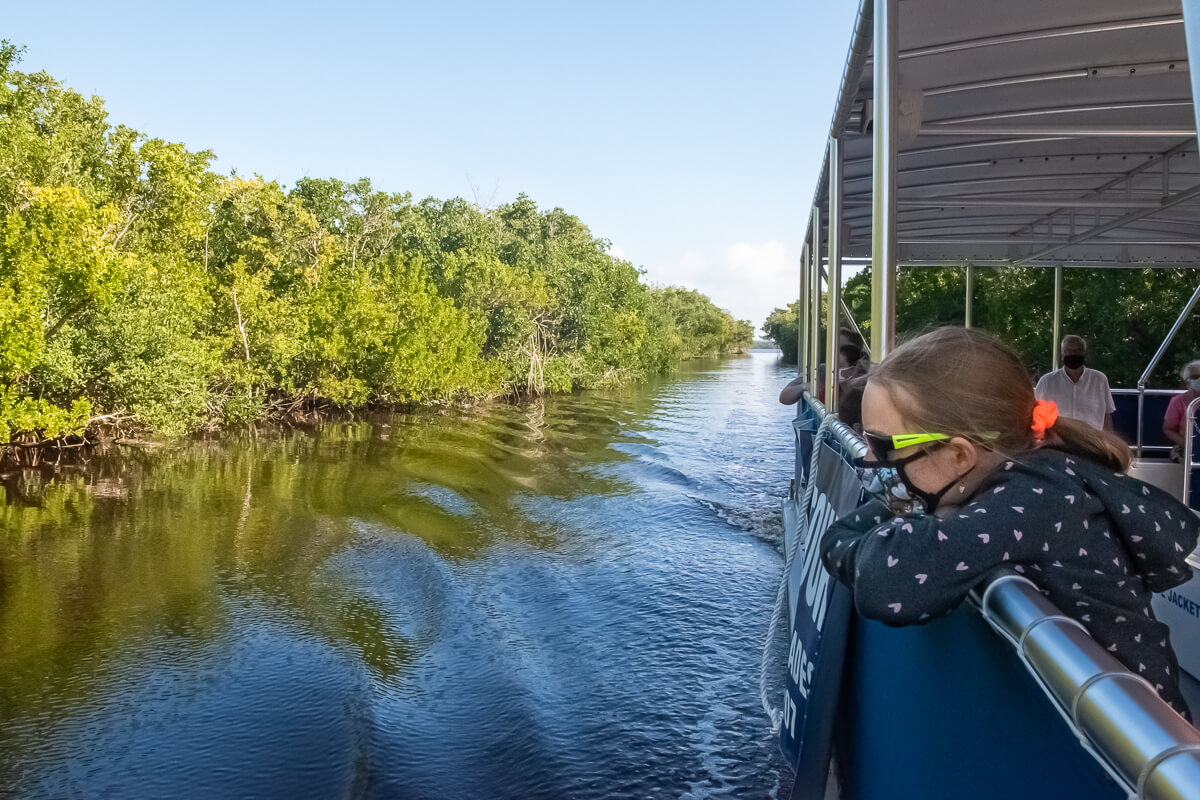
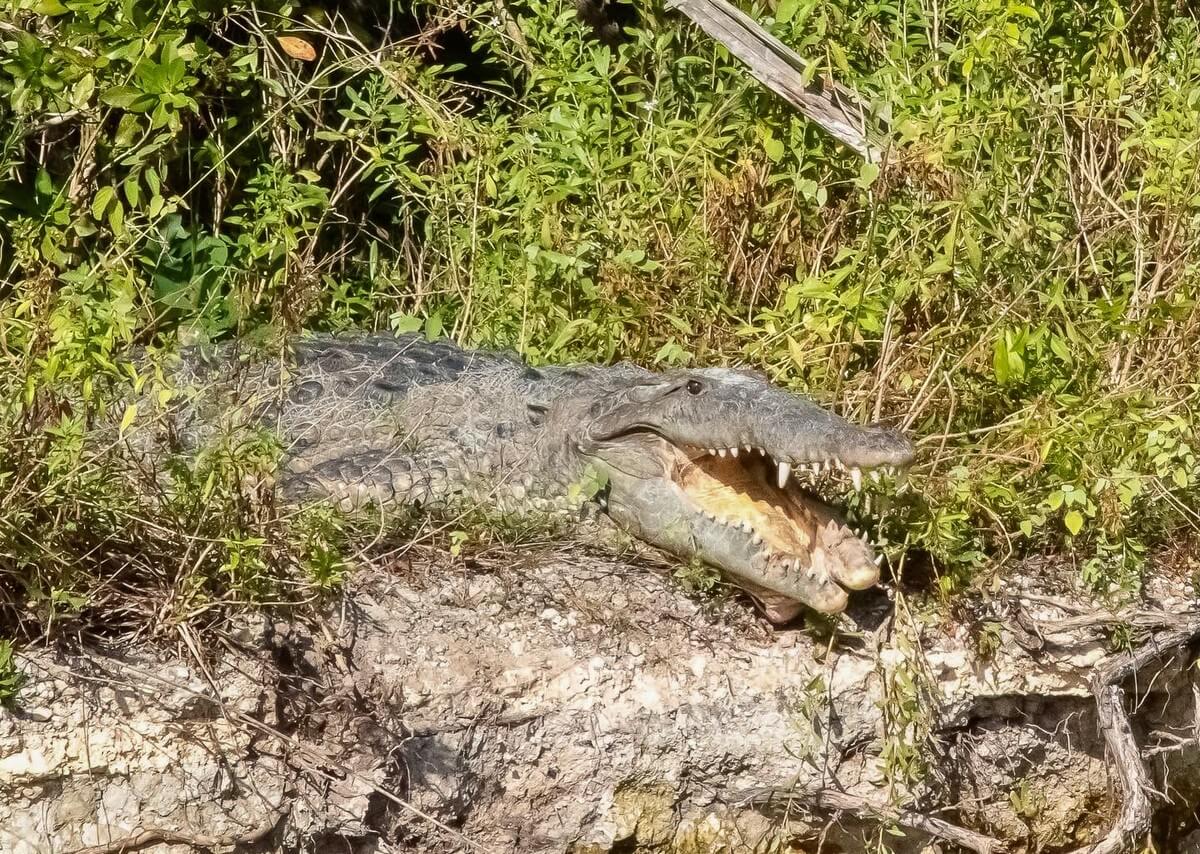
Hike Some Trails in the Flamingo Area
After you finish your boat tour, take a few short hikes and immerse yourself in the park’s natural surroundings. Considering the recommendations of park rangers, we did Mahogany Hammock Trail, followed by Anhinga and Gumbo Limbo Trails. You can get to all of these hikes from the main park road.
Mahogany Hammock Trail
Mahogany Hammock Trail Info: o.5 miles round trip, easy boardwalk that loops around, wheelchair accessible; Trailhead located about 26 miles from Flamingo Visitor Center off of Mahogany Hammock Road.
From Flamingo Visitor Center, head back towards the park entrance. Look for Mahogany Hammock Road, which will be on your left. Once there, take a relaxing stroll on the boardwalk, first above the marshes, then through the hammock. Look for wildlife and the large mahogany tree along the way.

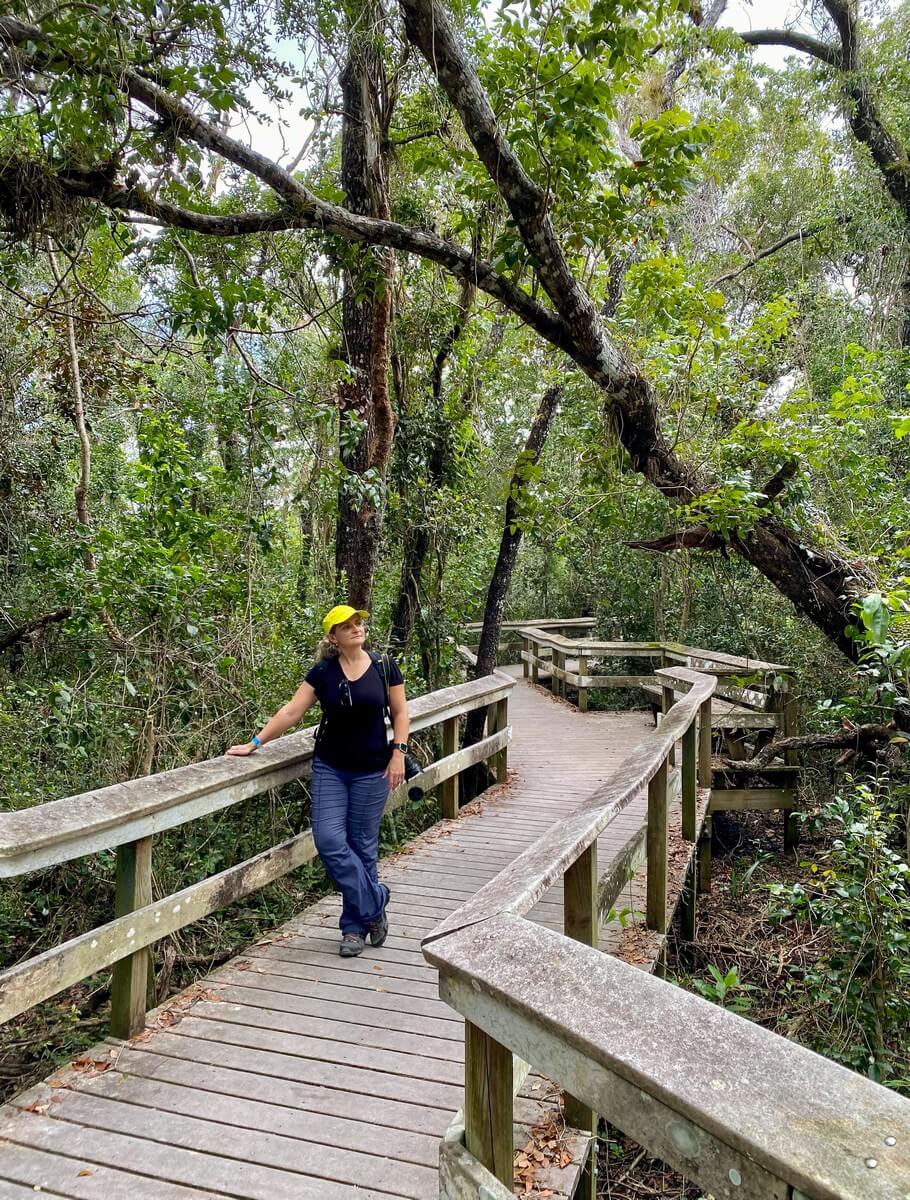
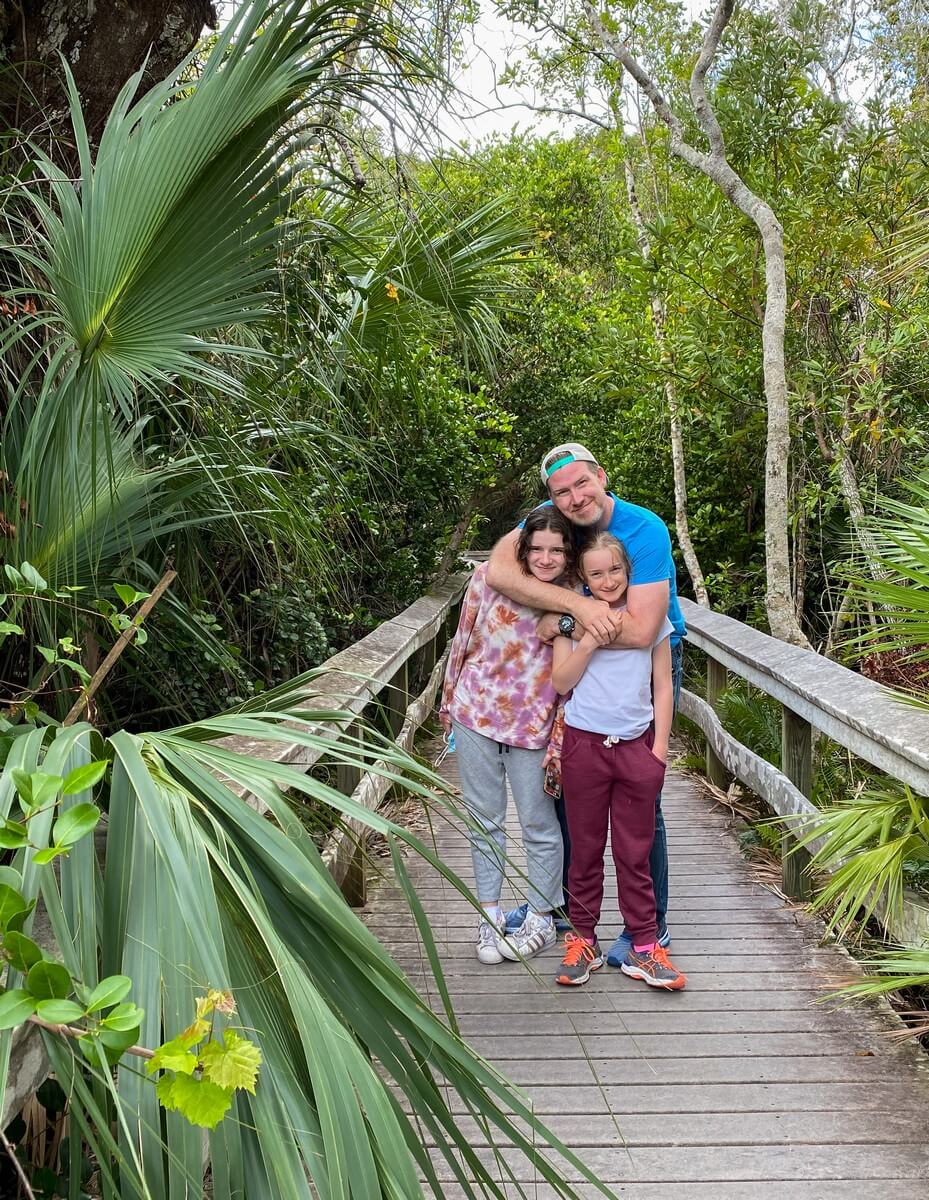
Anhinga and Gumbo-Limbo Trails
Anhinga Trail Info: o.8 miles round trip, easy paved path and boardwalk that loops around, wheelchair accessible; Trailhead located at Royal Palm Visitor Center.
Gumbo-Limbo Trail Info: o.4 miles round trip, easy paved path that loops around, wheelchair accessible; Trailhead located at Royal Palm Visitor Center.
Anhinga and Gumbo Limbo Trails are further along the main park road at Royal Palm, and not far from the entrance. The turn for Royal Palm will be on your right. Here you can experience more of the diverse habitats so vital to all the creatures that call Everglades National Park home. Anhinga Trail will take you above the swamp and nesting area, while Gumbo-Limbo Trail will give you another chance to experience the hardwood hammock.
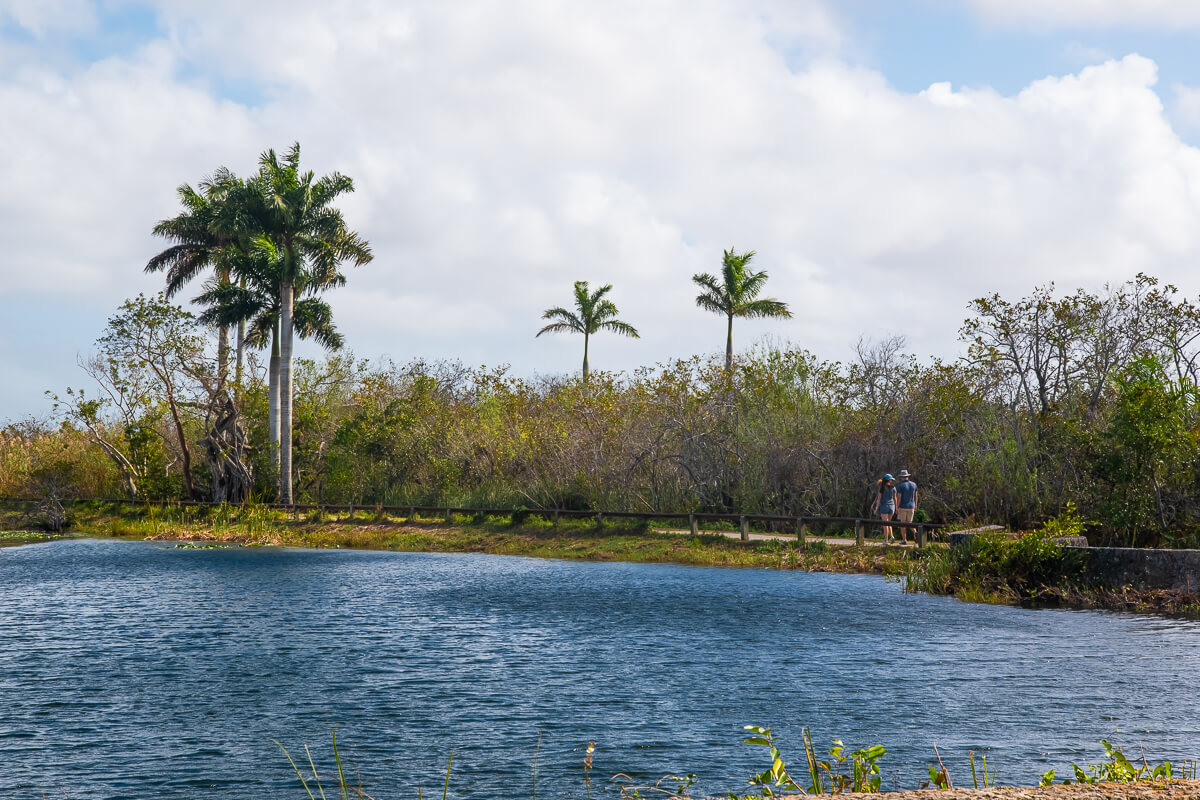
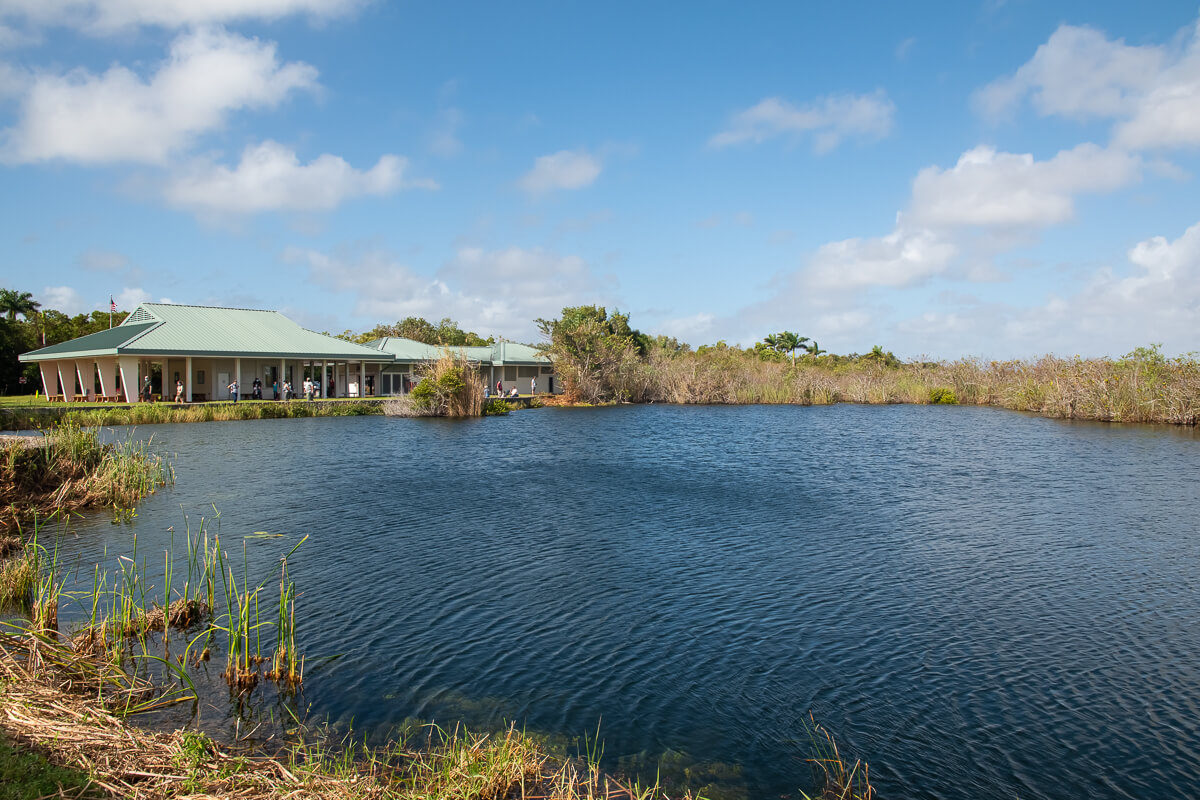
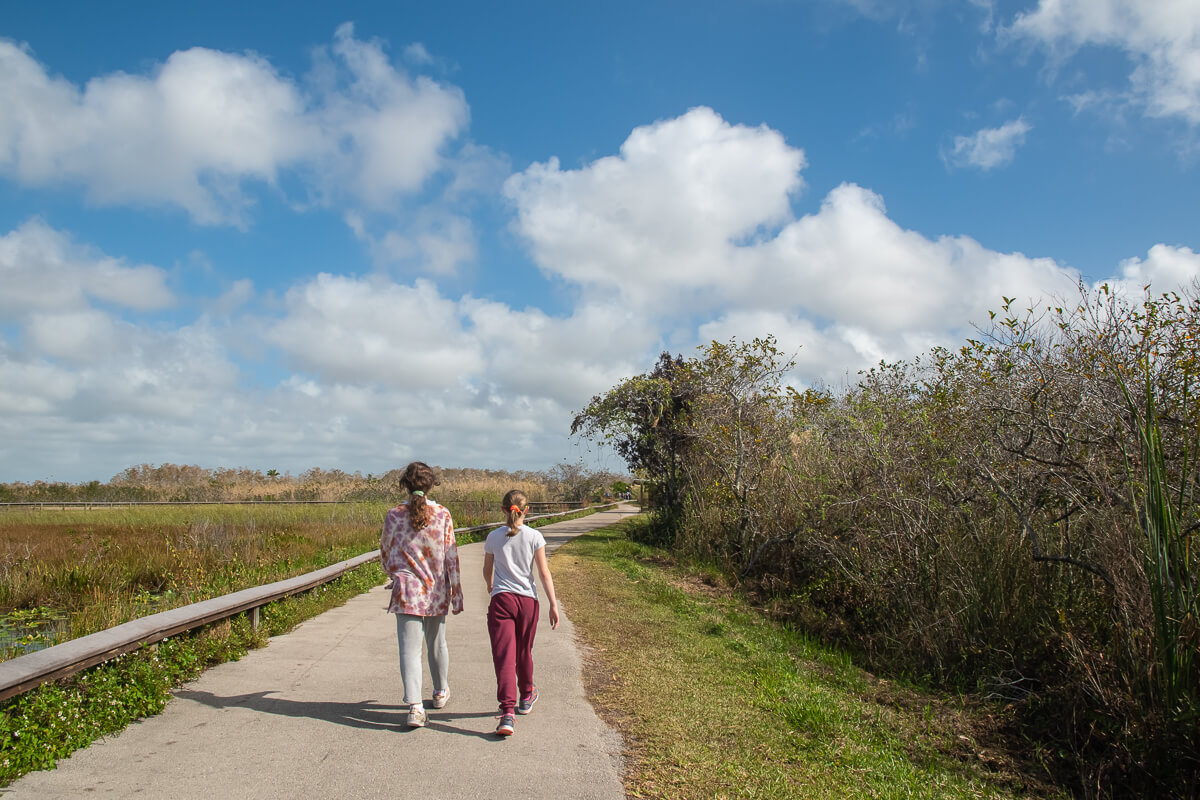
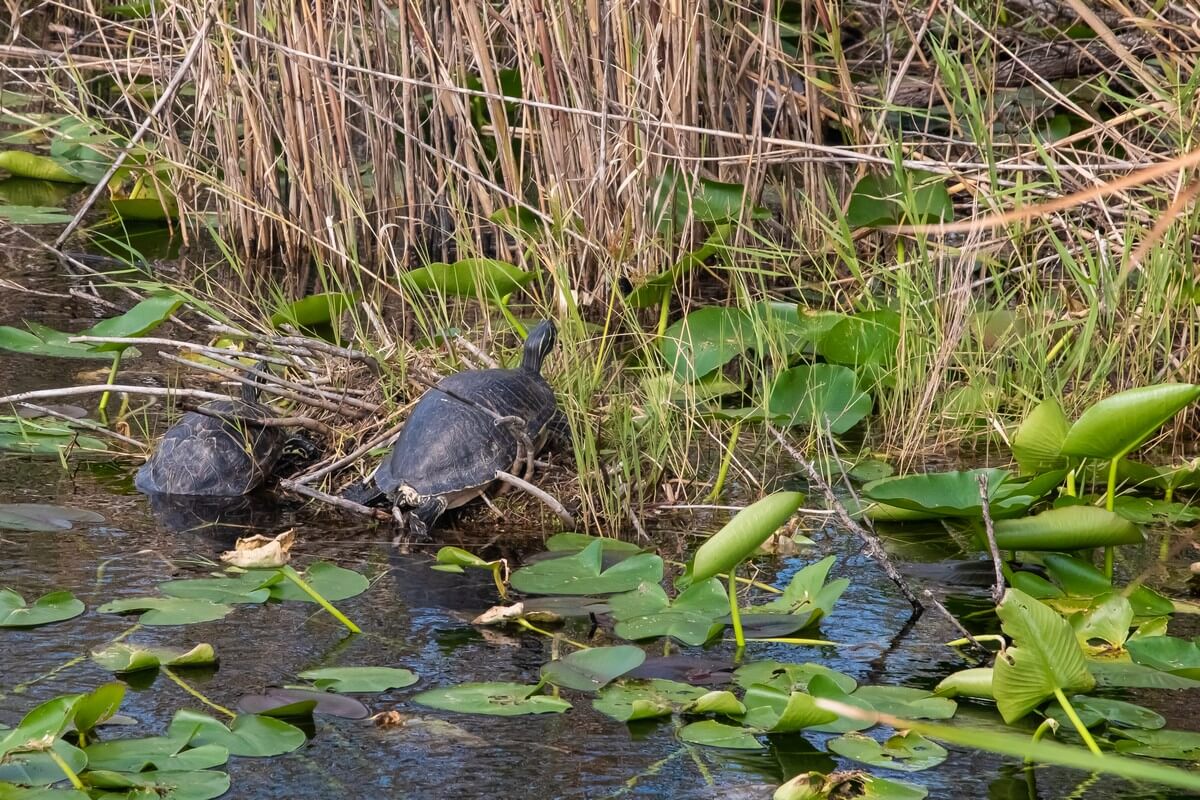

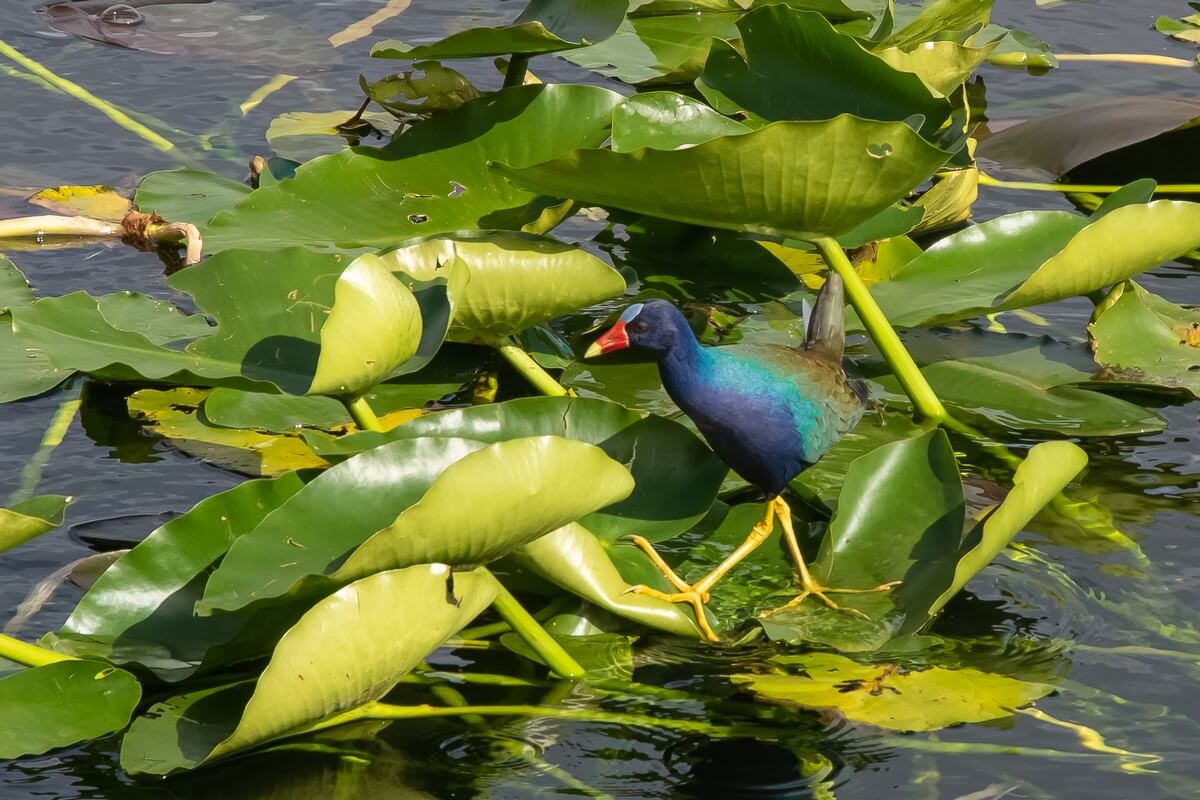
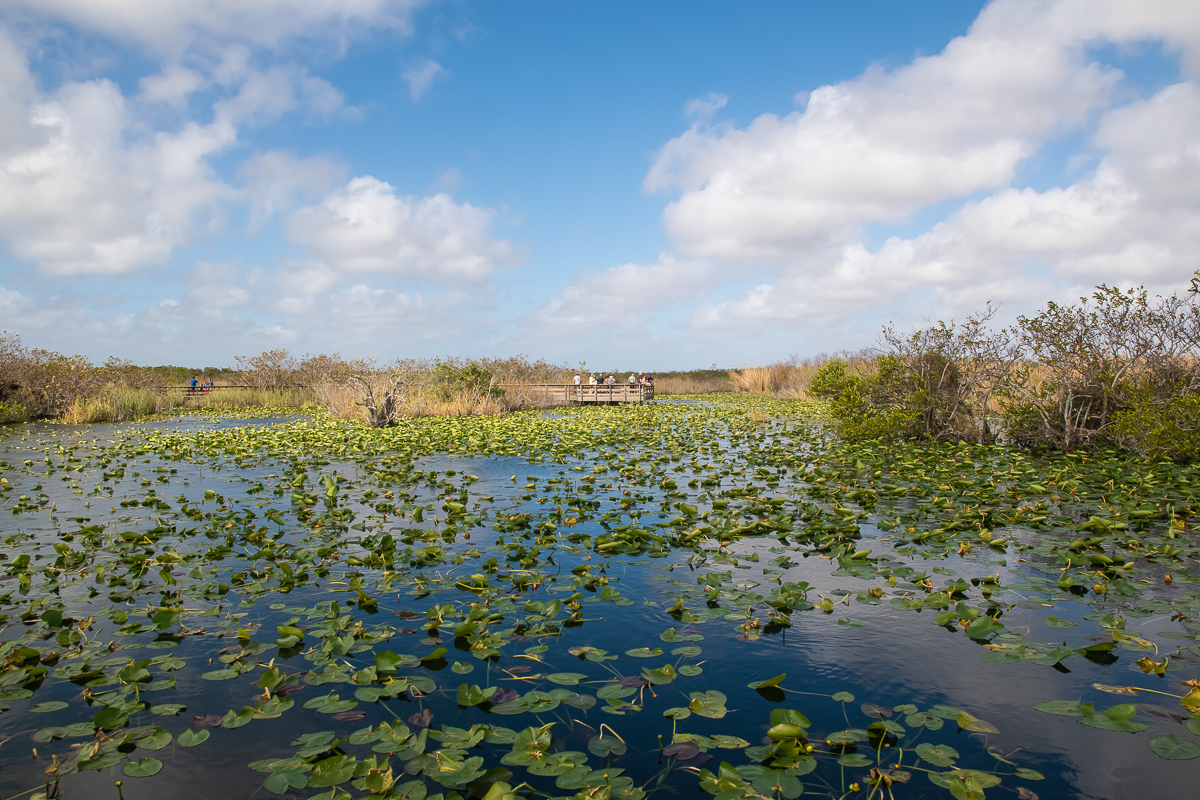
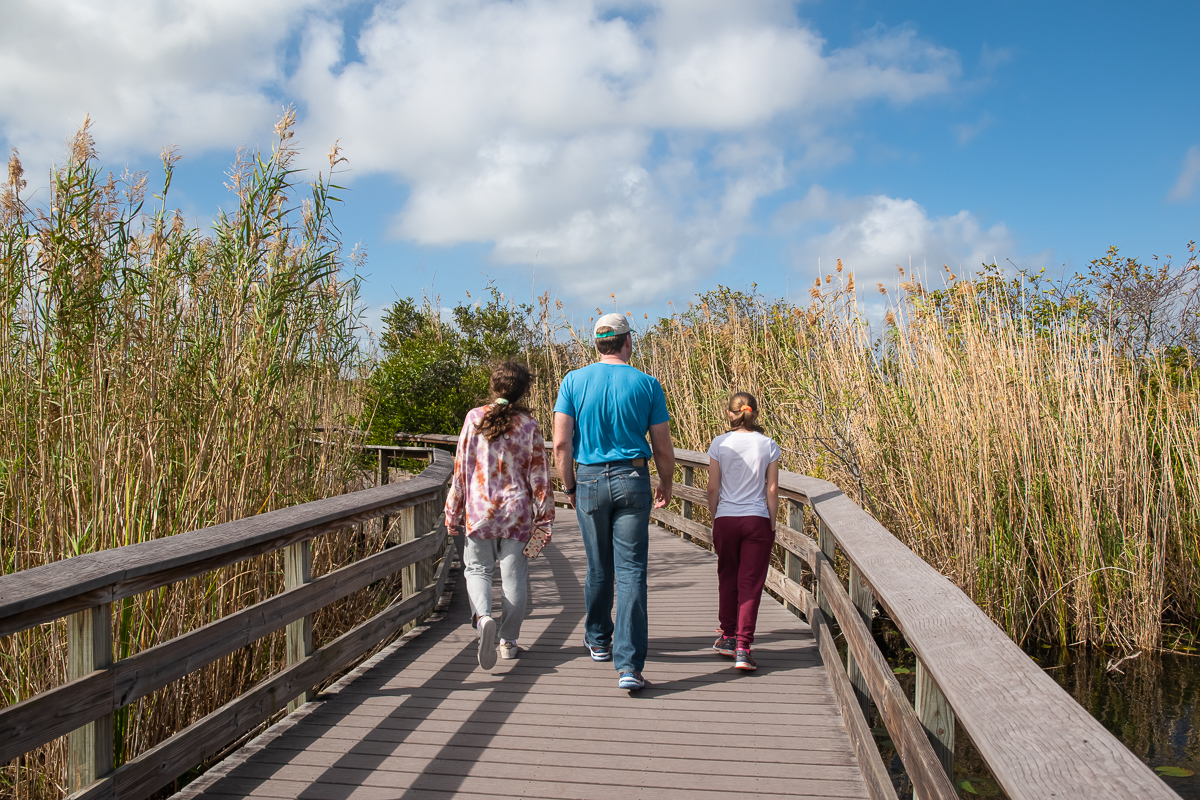
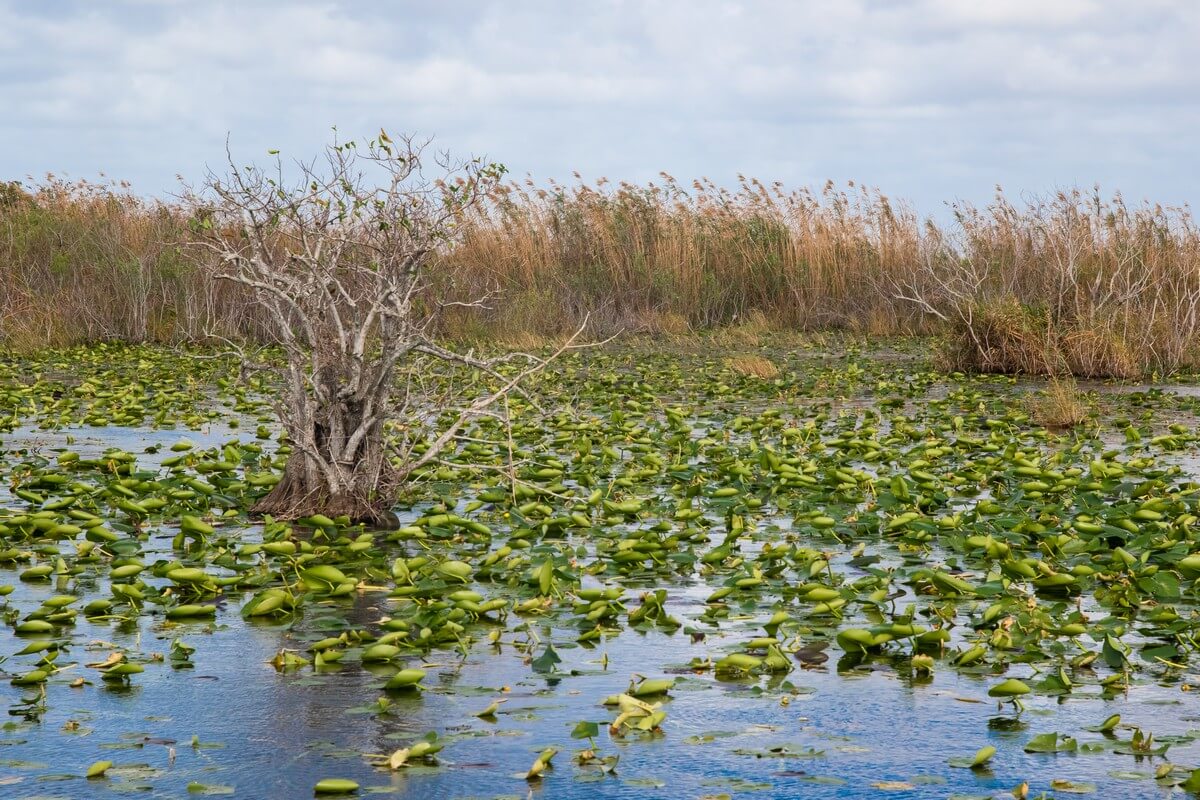
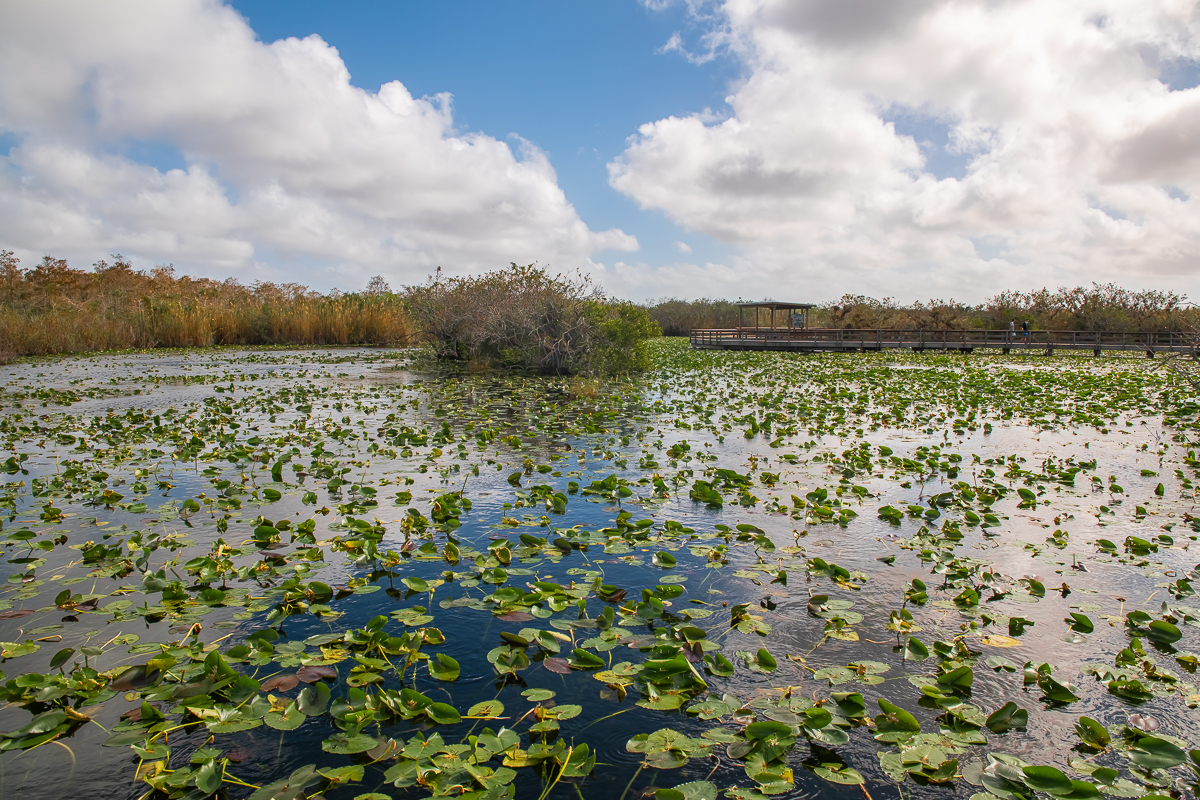
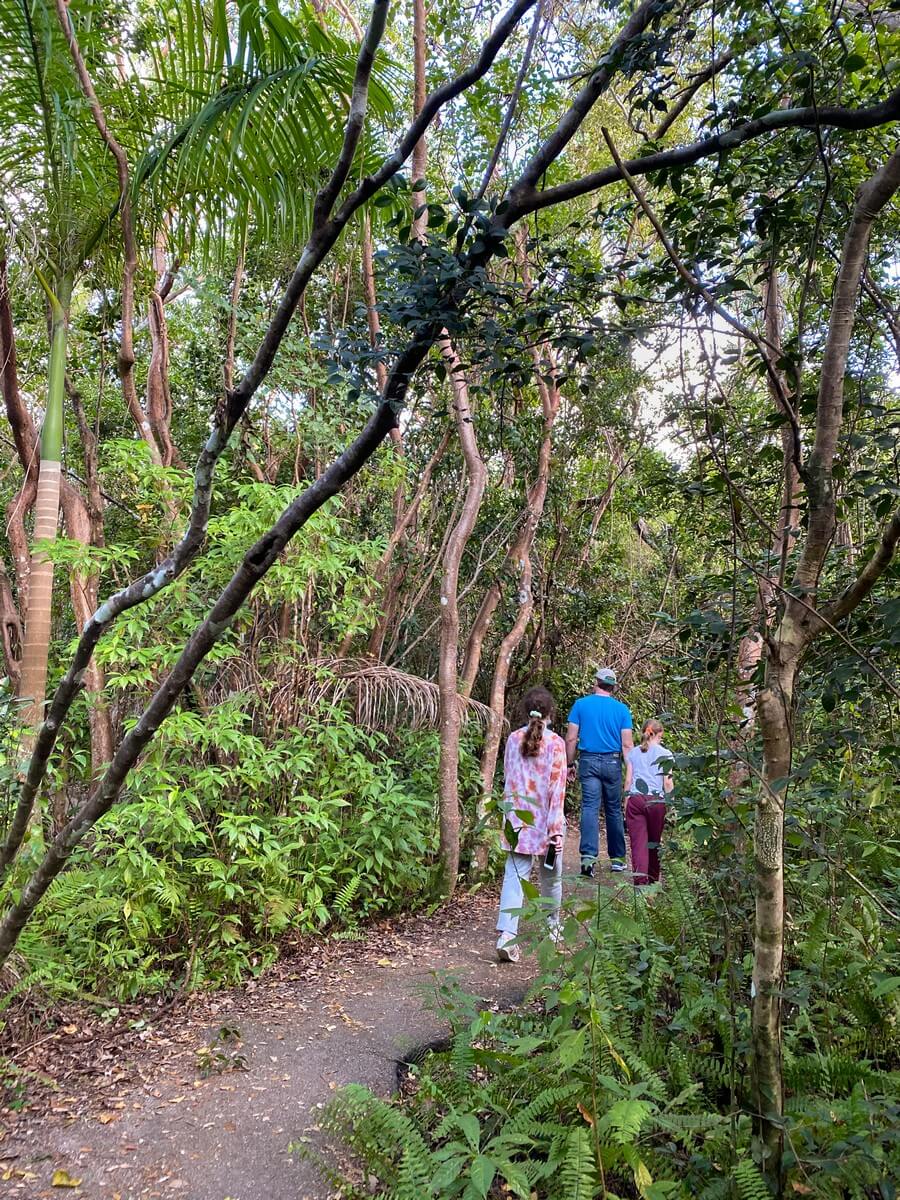
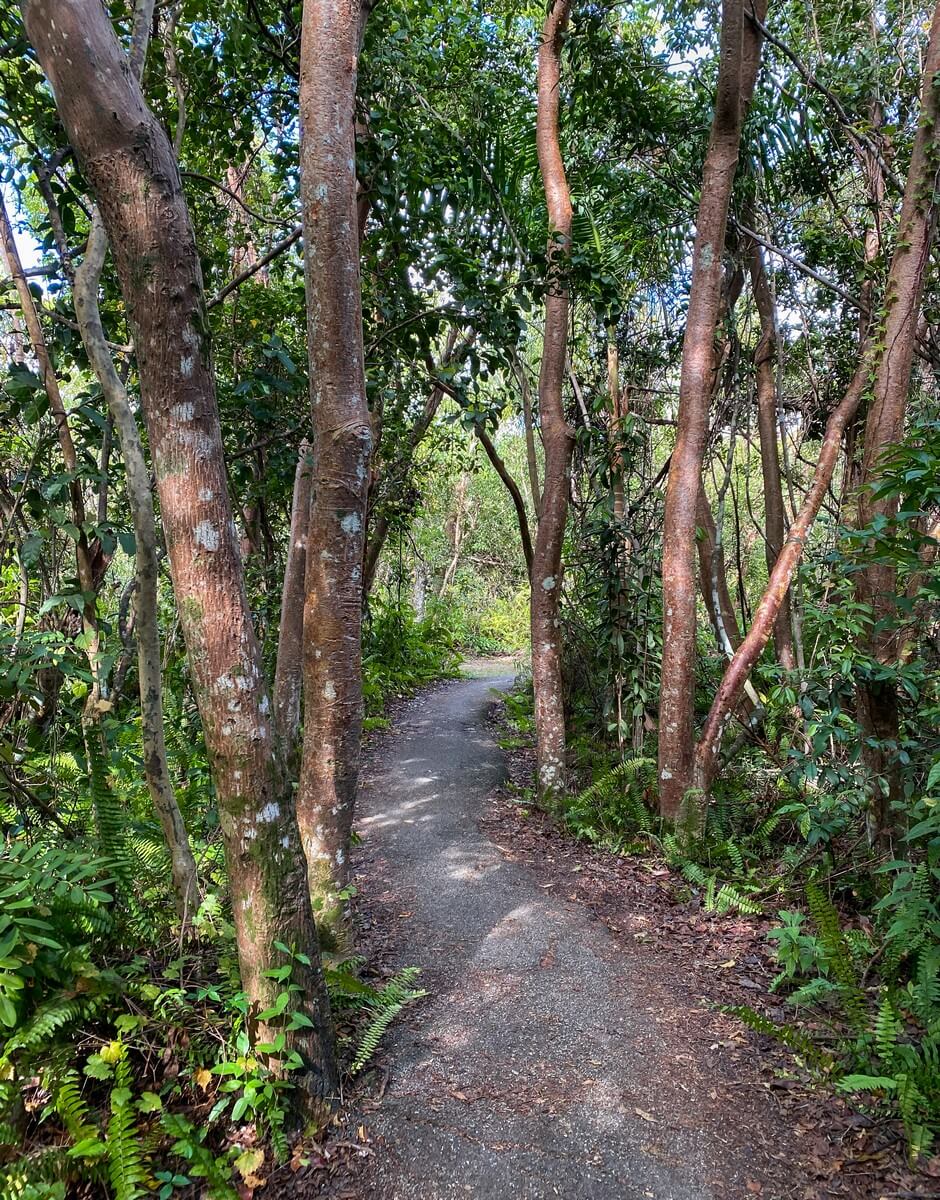
There are certainly other trails you can take, but if you don’t have much time, these will give you a good overview of the Flamingo area. As you stroll along, always be on the lookout for wildlife, since this really is what tops off the Everglades experience.
Explore Shark Valley
If you would like to continue exploring more of the park, head to Shark Valley Visitor Center after you finish hiking in the Flamingo area. Keep in mind that Shark Valley is a little over an hour drive from the trails at Royal Palm. As I mentioned earlier, we didn’t have the opportunity to visit there, since the whole area was closed because of flooding. However, I can still give you a few tips on what to do, since I read all about it before visiting the park.
Tram Road: Take the Tram, Hike, or Bike
Tram Road Info: 15 miles round trip, paved road that loops around, wheelchair accessible; Road begins behind the Shark Valley Visitor Center.
The main attraction at Shark Valley is the Tram Road, which starts right behind the Visitor Center. As the name suggests, you can take a tram tour here, which is a great way to see this 15-mile loop. The most popular stop along the Tram Road is the 65-foot observation tower, located about half way. From the top, you can get wonderful panoramic views of the unique landscape that defines much of The Everglades.
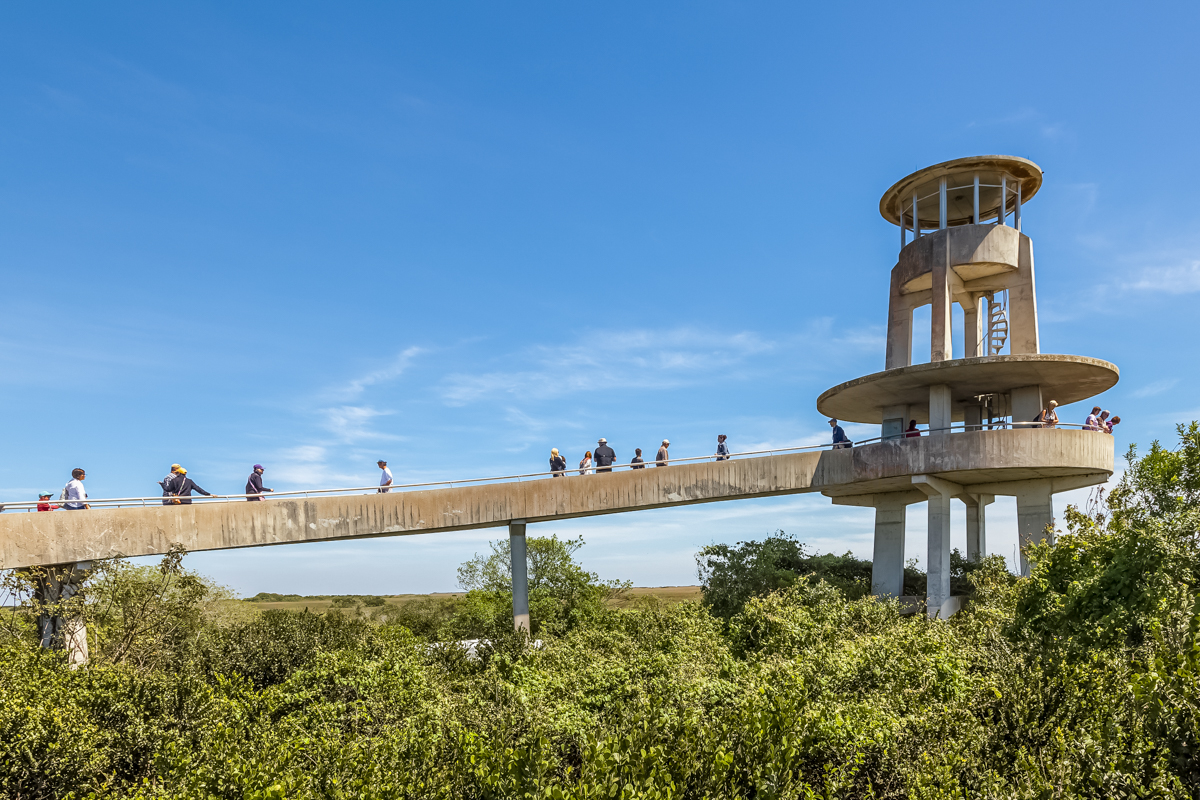
© Typhoonski | Dreamstime.com
To book your tickets for the tram tour in advance, go to the Shark Valley Tram Tours Website. If you prefer to take on a greater challenge, you can choose to walk or ride a bike around the loop. The folks at Shark Valley Tram Tours also offer bike rentals, and you can find more information about this right HERE.
Hike the Trails in Shark Valley
Bobcat Boardwalk Info: 0.5 miles one way, out-and-back easy boardwalk, wheelchair accessible; Trailhead located off of the Tram Road.
Otter Cave Hammock Trail: 0.25 miles one way, out-and-back rough trail with stones, NOT wheelchair accessible; Trailhead located off of the Tram Road.
Besides the Tram Road, there are a couple of short trails you can take at Shark Valley. These are the Bobcat Boardwalk and Otter Cave Hammock Trail. If you are looking to do more hiking, you might want to stay longer in the Flamingo Area before heading over to Shark Valley.
More Things to Do in Everglades National Park
When you finish exploring both the Flamingo and Shark Valley areas, you probably won’t have time to do anything else that day. However, here are a few more suggestions if you are planning on returning to the park for another half or a full day.
Take an Airboat Tour Along Tamiami Trail (US 41)
One interesting experience would be to take a tour on an airboat. This is a type of boat that has a large fan in the back and is specifically designed for floating around the swamps. There are three businesses that are authorized by the National Park Service to give these tours: Coopertown Airboats, Gator Park, and Everglades Safari Park. All three are located east of Shark Valley along US 41/Tamiami Trail. Depending on your preferences, you may find this experience more interesting than riding the tram in Shark Valley. If this is the case, plan to come for an airboat tour after exploring the Flamingo area and skip Shark Valley altogether.
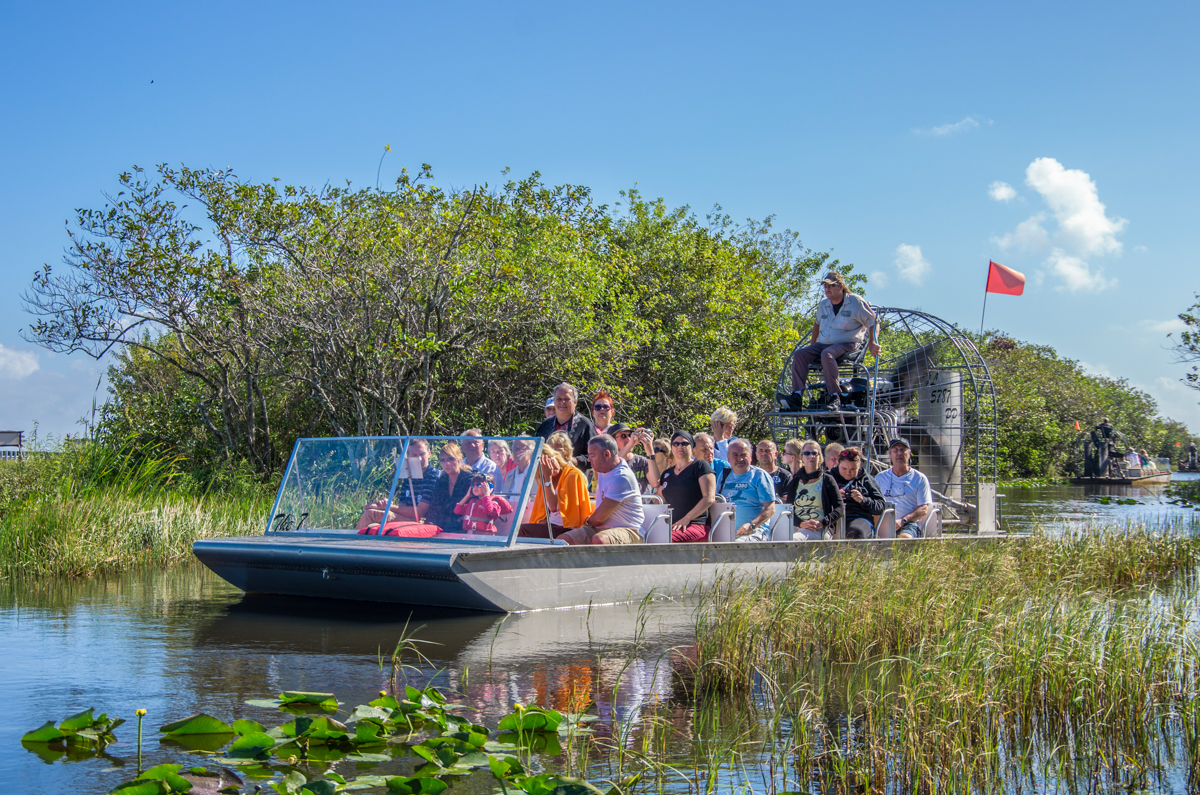
© Fabio Formaggio | Dreamstime.com
Visit the Gulf Coast Area
Another area you might want to check out is the Gulf Coast Area, located at the west end of the park. From there, you can set out to explore Ten Thousand Islands, a large number of low-lying keys covered by mangroves. Your options are to either take a boat tour with Everglades Florida Adventures, or rent a canoe/kayak from them and explore on your own.
Other Nearby Attractions
If you are planning to spend more time in South Florida, consider visiting a couple of other natural attractions near The Everglades. It might be a good idea to purchase America the Beautiful National Park Annual Pass. This will save you the trouble of having to pay separate fees each time you enter a National Park or another federal recreation site.
Biscayne National Park
Spend a day in Biscayne National Park, and enjoy exploring Biscayne Bay by snorkeling, diving, canoeing, kayaking, or paddling. If this sounds like too much work, take a heritage boat tour to Boca Chita, Elliott, or Adams Key. To book your adventure go to Biscayne National Park Institute, and for more information about the park visit the official Biscayne National Park Website.
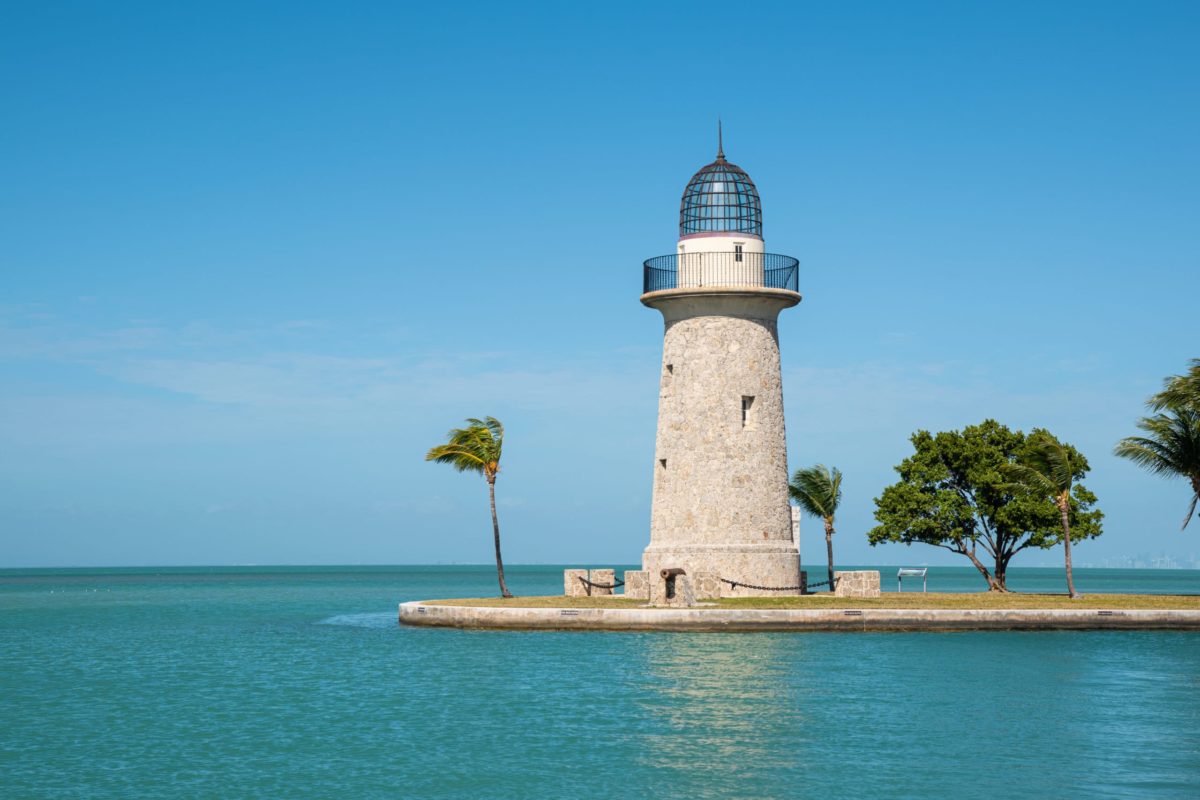
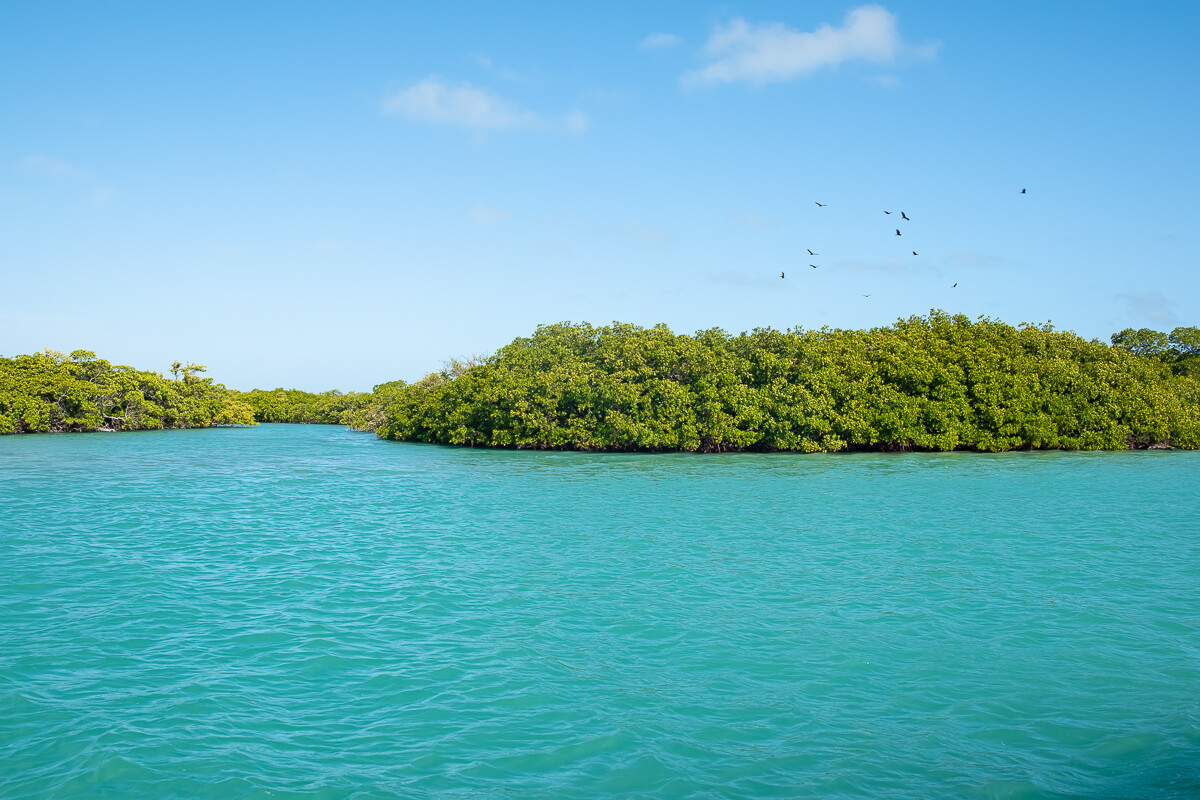
Big Cypress National Preserve
Another interesting natural area is Big Cypress National Preserve, located on US 41/Tamiami Trail, between Shark Valley and the Gulf Coast area of Everglades National Park. The preserve features magnificent cypress tress and swamps where wildlife, including plenty of alligators thrive. If you wish, you can plan to combine a visit to Big Cypress with Shark Valley and the Gulf Coast area. While at the preserve, be sure to take a stroll on the boardwalk at Kirby Storter Roadside Park. It’s a very enjoyable trail that will give you a nice overview of the environment. For more information, stop by the official Big Cypress National Preserve Website.
Kirby Storter Boardwalk Info: 0.5 miles one way, out-and-back easy boardwalk, wheelchair accessible; Trailhead located at Kirby Storter Roadside Park off of Tamiami Trail / US 41.

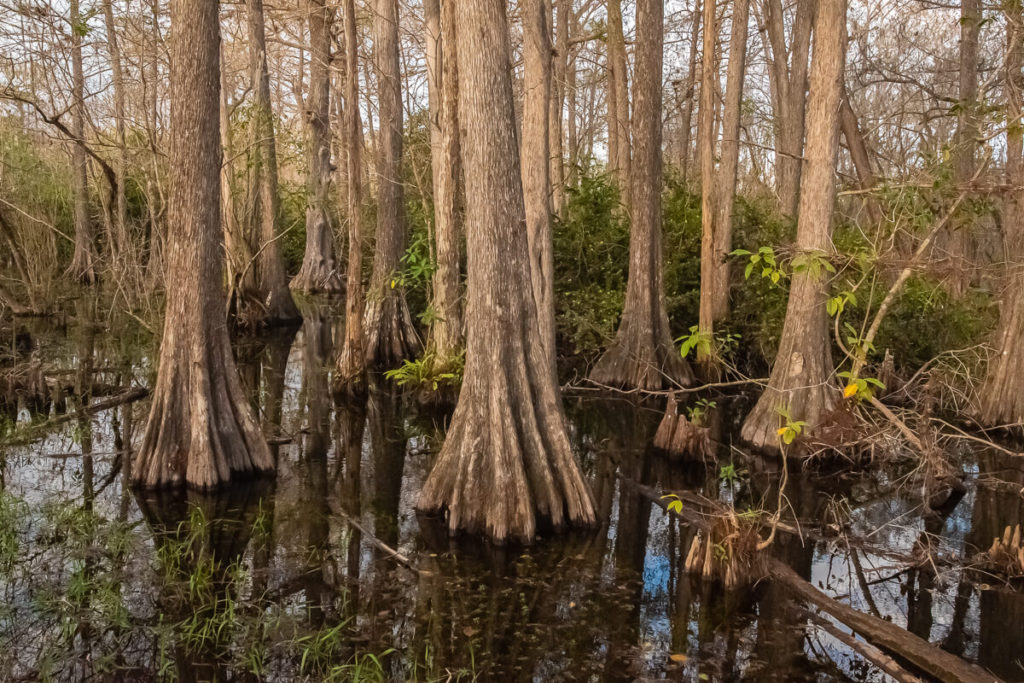
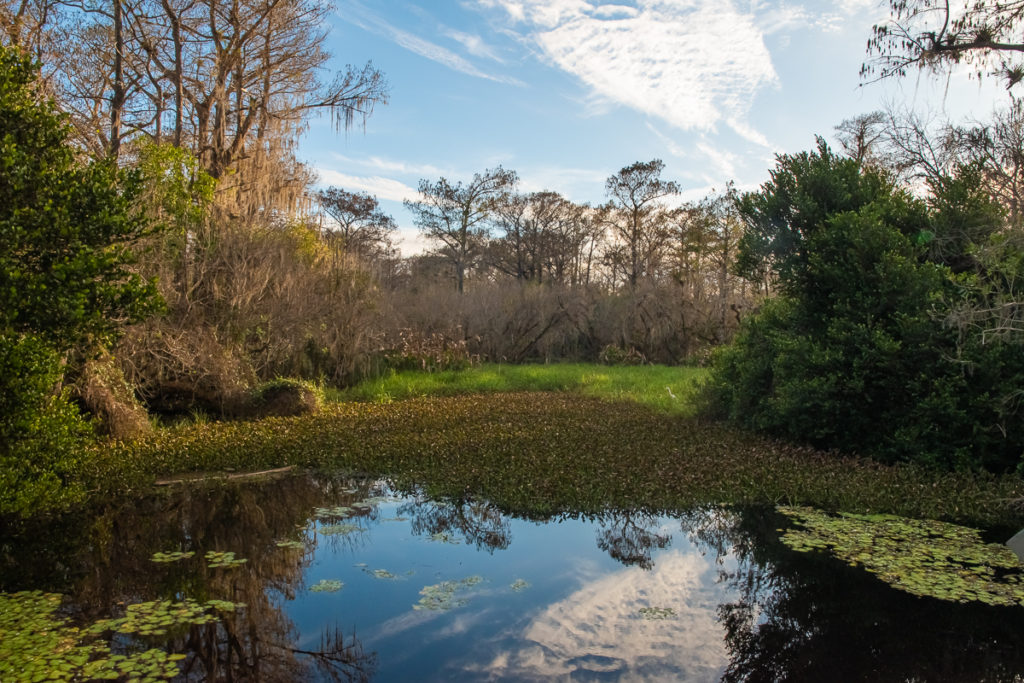

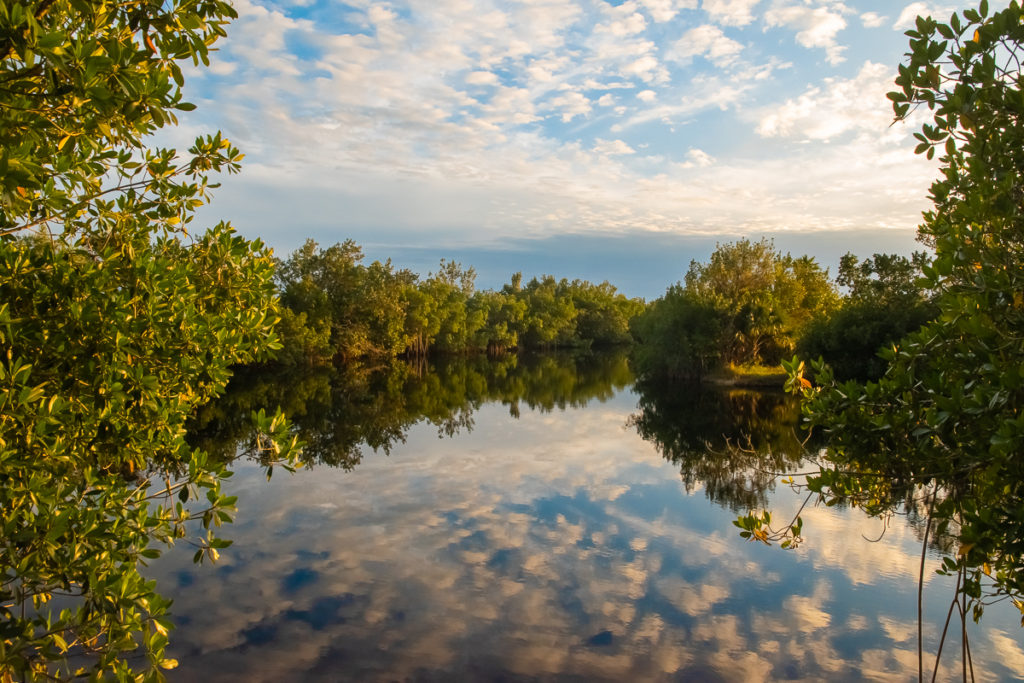
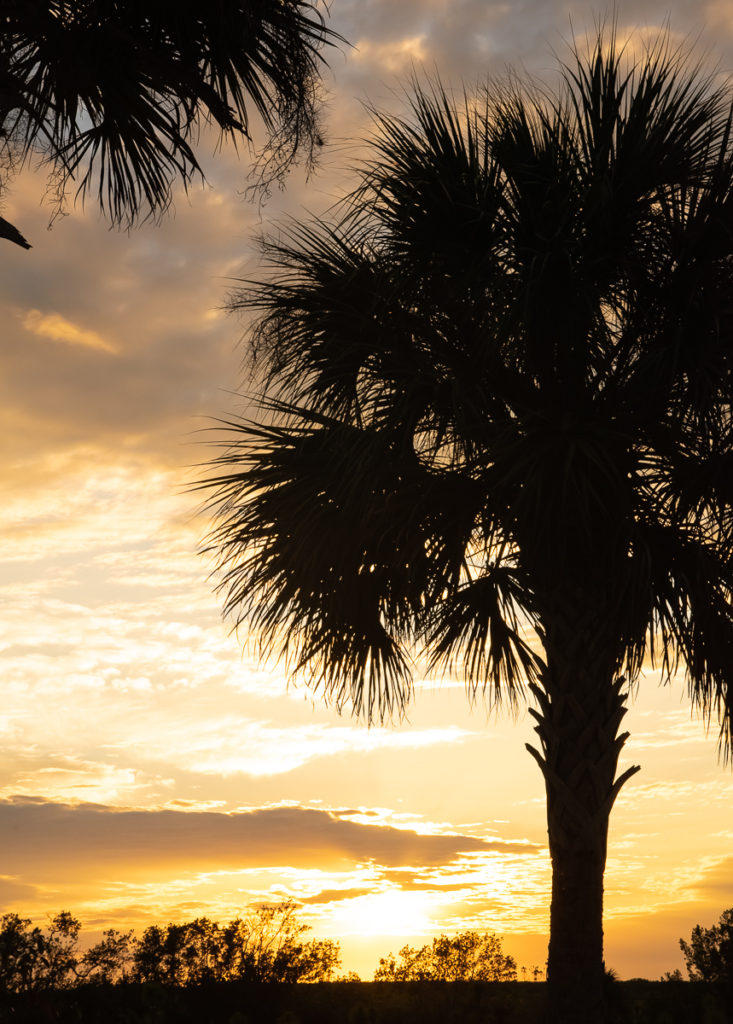
Prepare and Have a Great Time
In the end, whatever you decide, remember to plan ahead and come prepared! Check the weather in advance, and bring sunscreen and bug spray, sun hats and sunglasses, and plenty of food and water. Follow the trails, pick up your trash, and observe wildlife from a safe distance. This way you can make the most of your time and truly enjoy South Florida’s unique nature!
Resources to Help Plan Your Trip to South Florida
- Big Cypress National Preserve Official Website
- Biscayne National Park Official Website
- Biscayne National Park Institute – Book various Biscayne National Park tours
- Everglades National Park Official Website
- Flamingo Adventures – Book a back county boat tour of The Everglades’ Flamingo area
- Shark Valley Tram Tours – Book a tram tour or rent a bike in Shark Valley
- Coopertown Airboats – Book an airboat tour of the swamps along Tamiami Trail (US 41)
- Gator Park – Another business that offers airboat tours along Tamiami Trail (US 41)
- Everglades Safari Park – One more option for an airboat tour along Tamiami Trail (US 41)
- Everglades Florida Adventures – Book a boat tour or rent a canoe/kayak in The Everglades’ Gulf Coast area
- Greater Miami Official Website
- Visit Florida – Florida’s official state travel, tourism, and vacation website
Note: Unless otherwise indicated, the photos in this post were taken by us. Please send an e-mail to vessy@feelgoodandtravel.com if you would like to use any of them. All images are subject to copyright laws.
The activities described in this article took place on January 1, 2021.
PIN THIS POST!
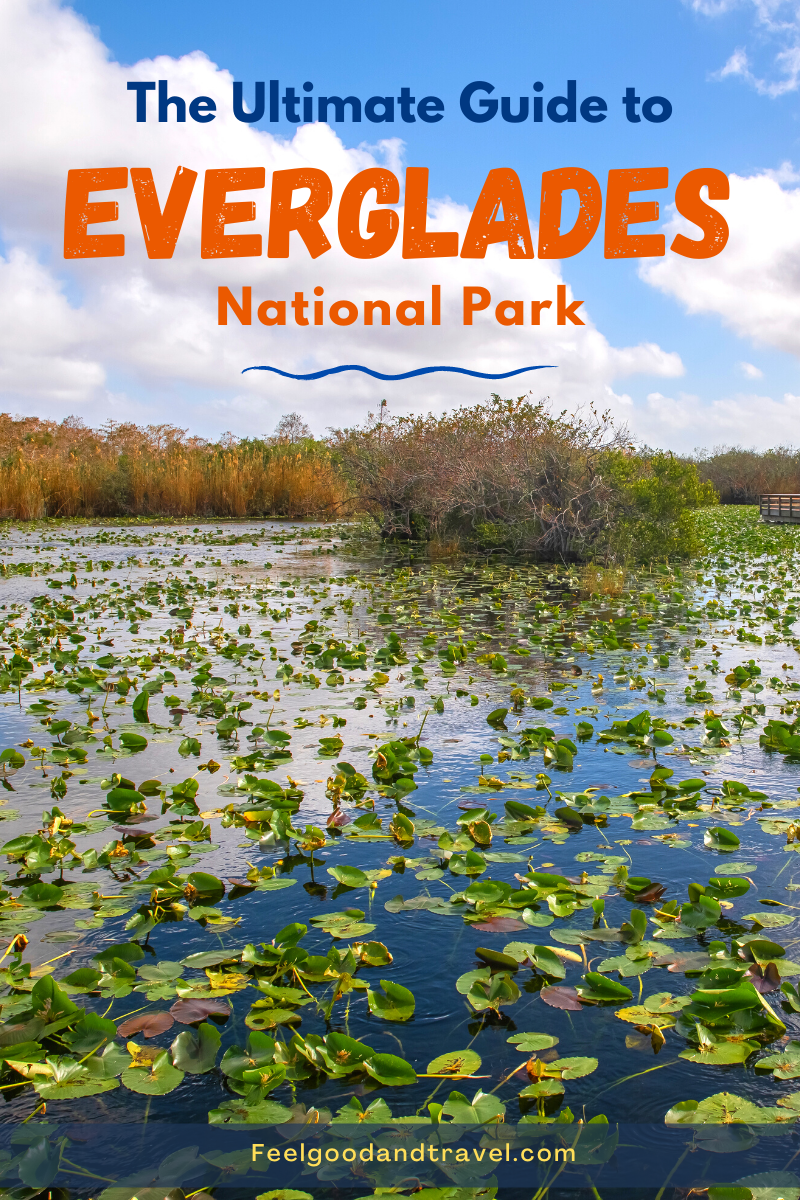
Everglades Pinterest Pin
Special Thanks
We would like to thank Flamingo Adventures for providing us with tickets for the back country boat tour. We had a wonderful time and must mention that while this was a sponsored boat tour, all opinions expressed in this article are our own. Please, refer to our Disclosure Policy for more information.
Disclaimer
This post contains affiliate links, which means that we will receive a small commission if you make a reservation through these links. There is absolutely NO additional cost to you! We are affiliates of Booking.com and sincerely believe this is one of the best websites for booking accommodations. Thank you so much for choosing to use our affiliate links! These small commissions help us continue to update and run this website. 🙂
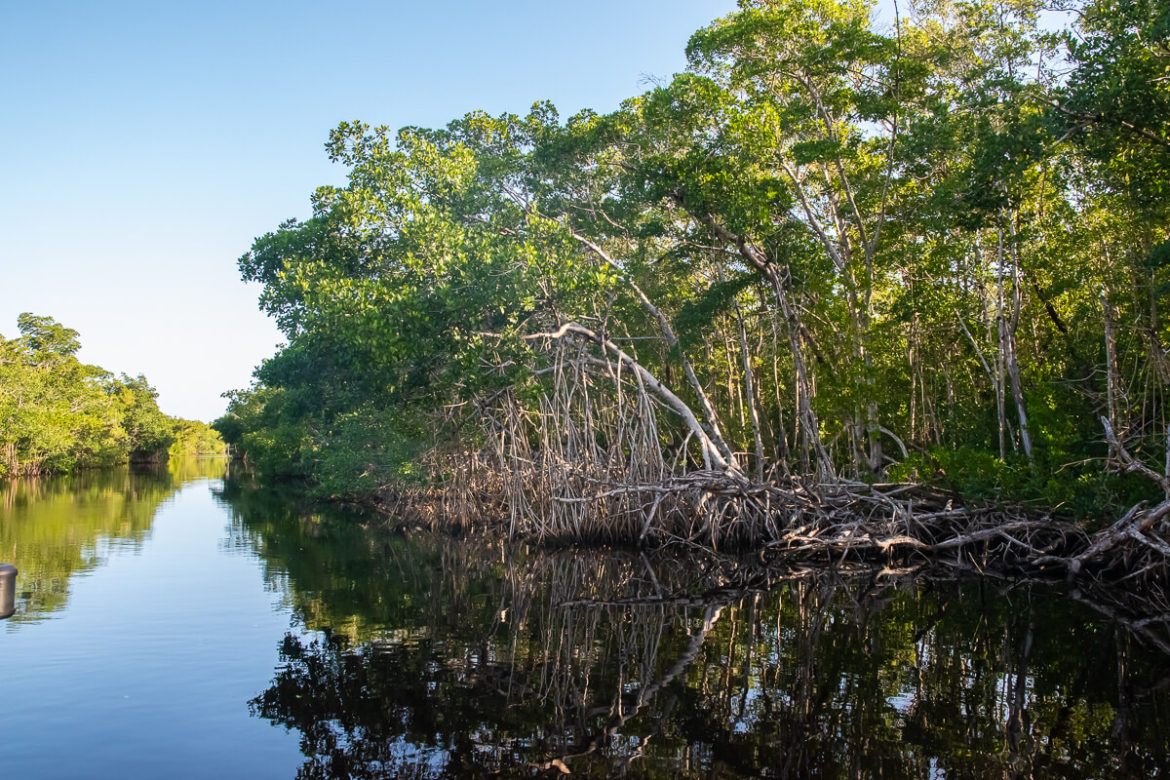
6 comments
This park is definitely on my list! I really want to do an air boat tour; that looks like such a unique experience. I loved your pictures, especially of the alligators and the cypress trees. I’ll keep all of this in mind.
Thank you so much, Stacey!
Yesss! I would LOVE to do the air boat tour next time we are in the area. Looks so cool! There is a lot to see down there! 🙂
We have not been to Everglades National Park, but it is on our list! Would love to do this boat tour! Looks like there is so much to see that the kids would enjoy!
Hi Marianne,
Definitely! You will have fun! There are so many things to do in Everglades National Park…And the hikes are very easy, so no problem for the kiddos! Have a great time! 🙂
What an incredibly beautiful nature area to explore!! And so much to do there also.
This Everglades National Park guide is incredibly helpful. You’ve really thought through everything you need to know before planning a trip. Thank you for this helpful resource. Saving this guide for later!